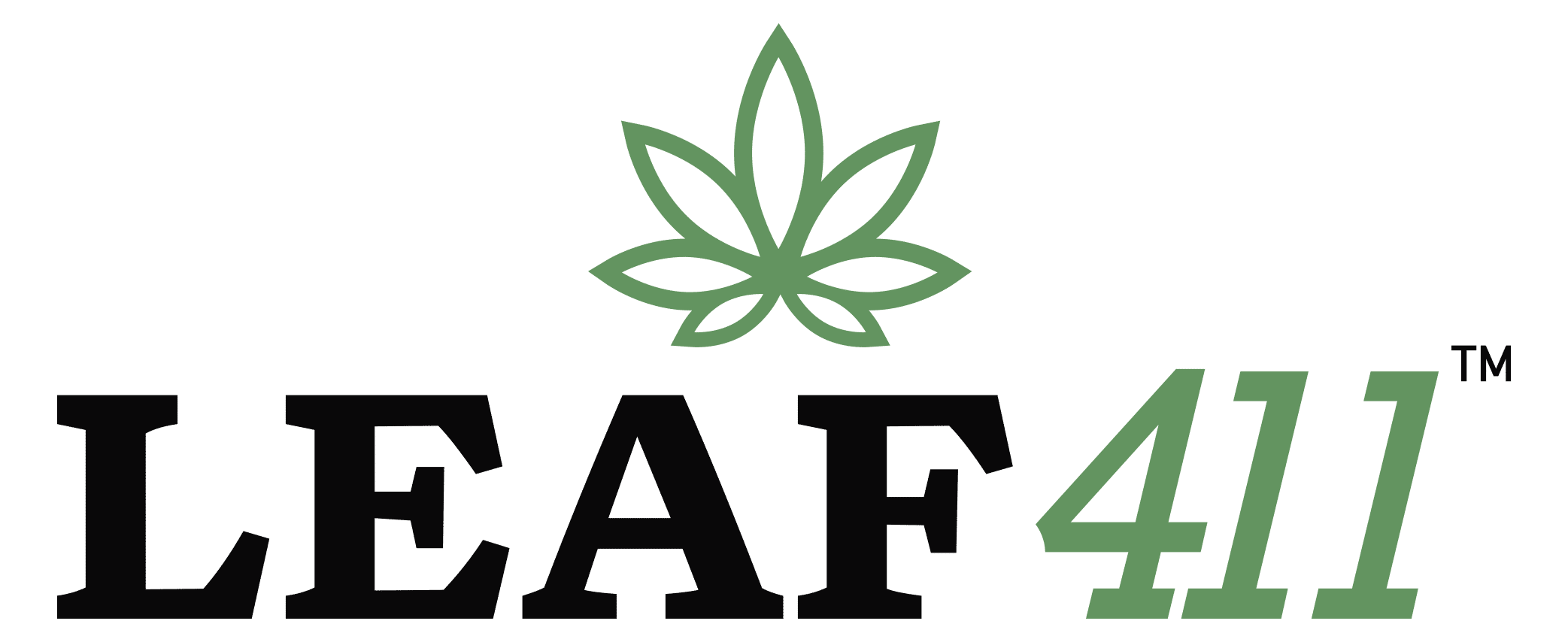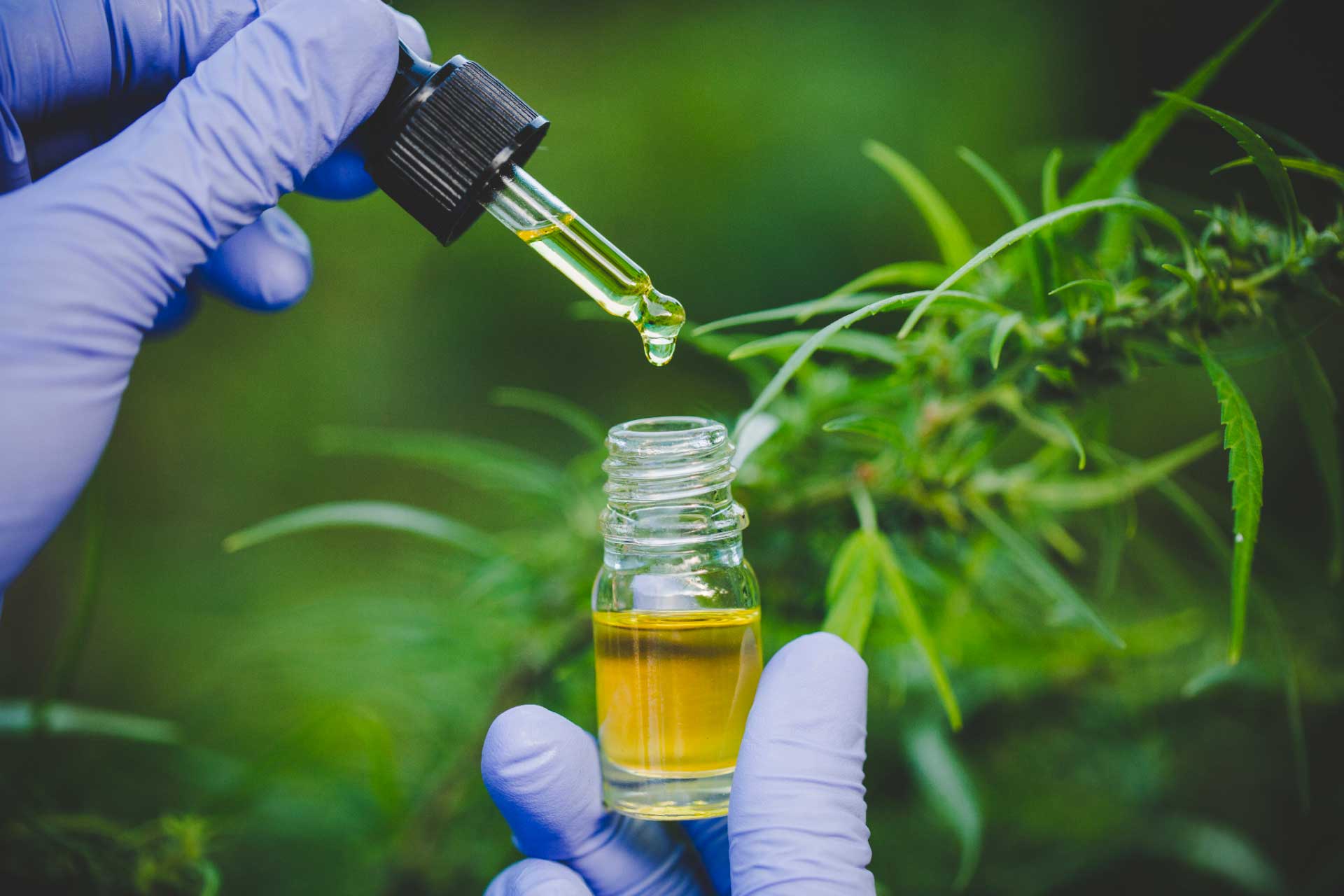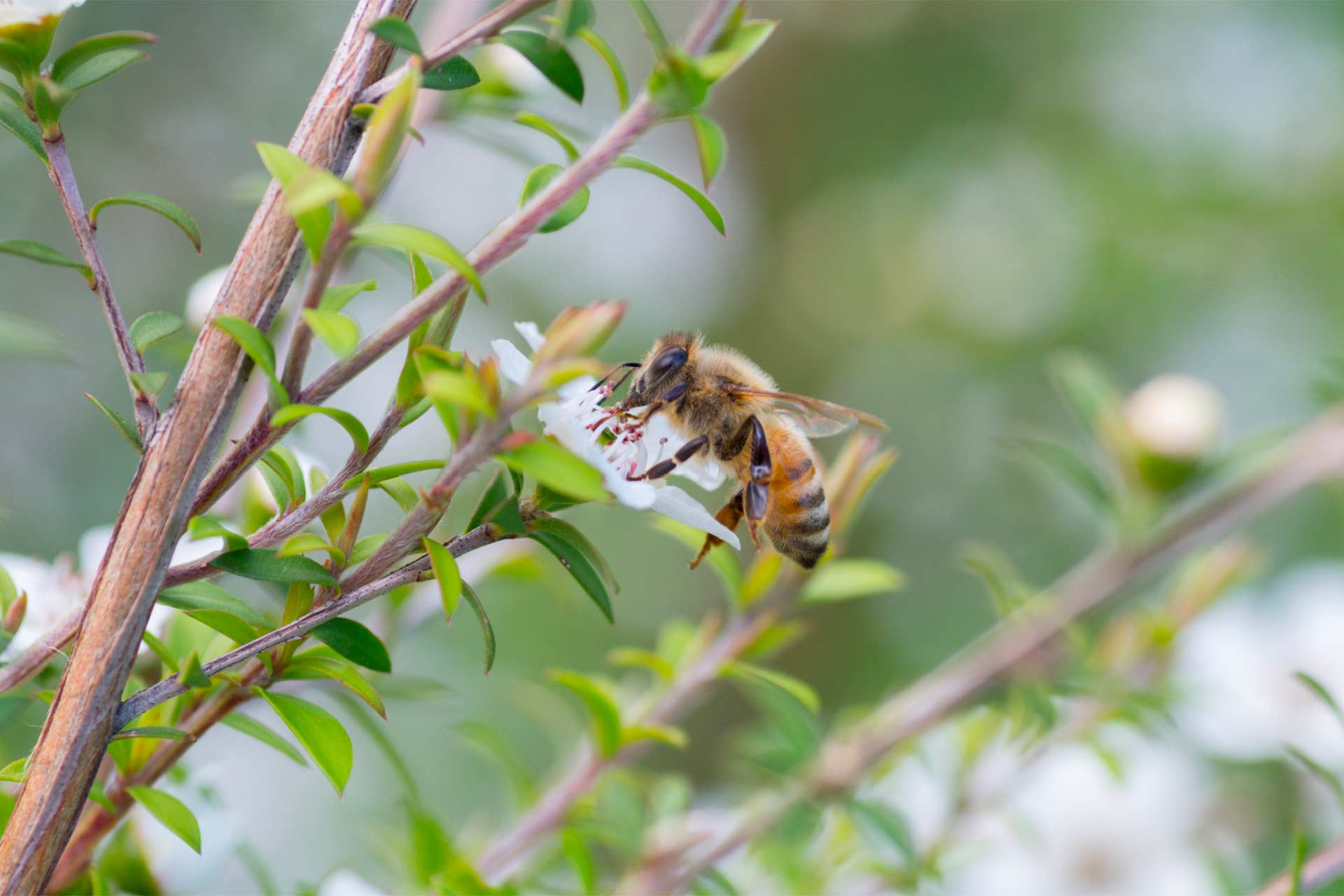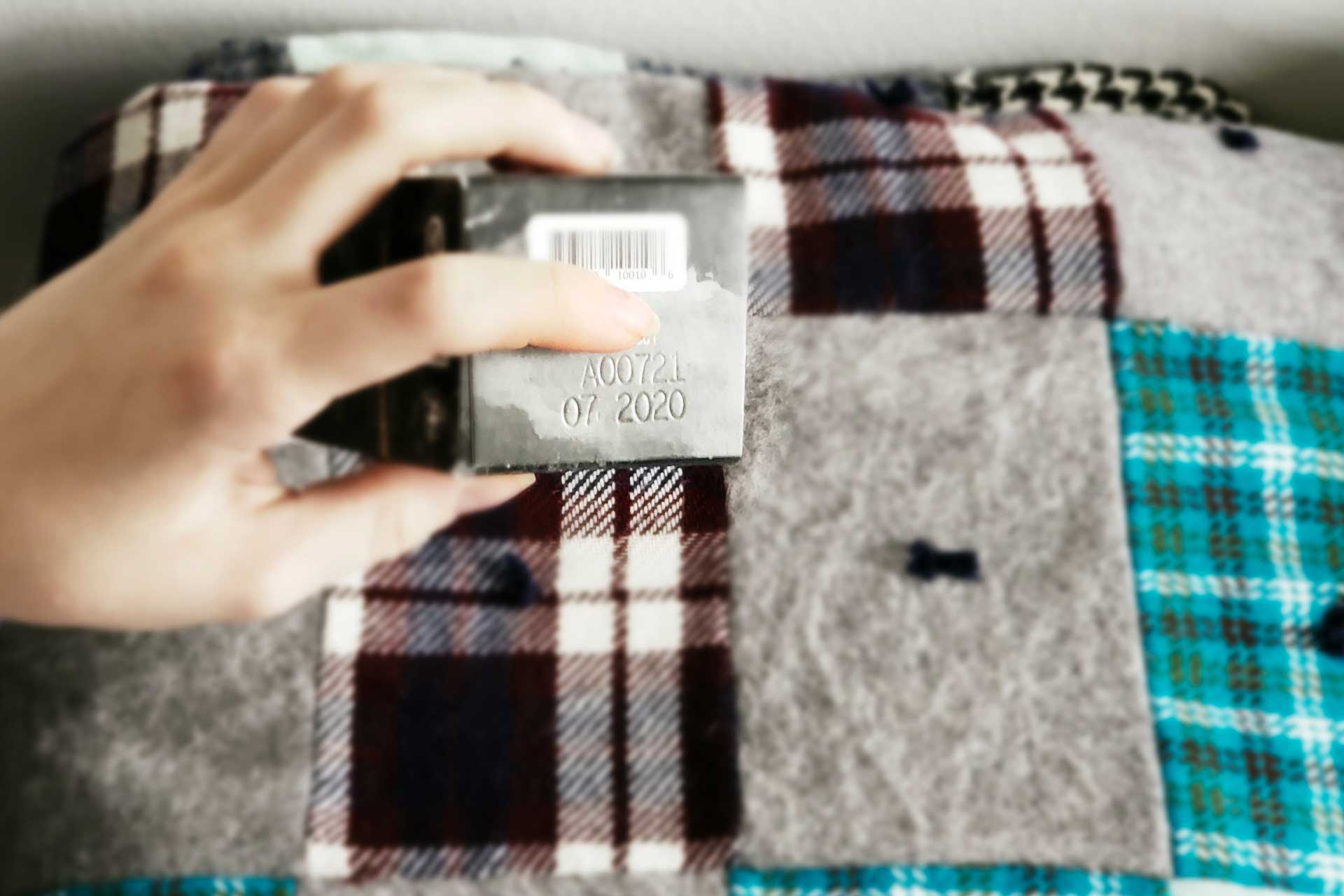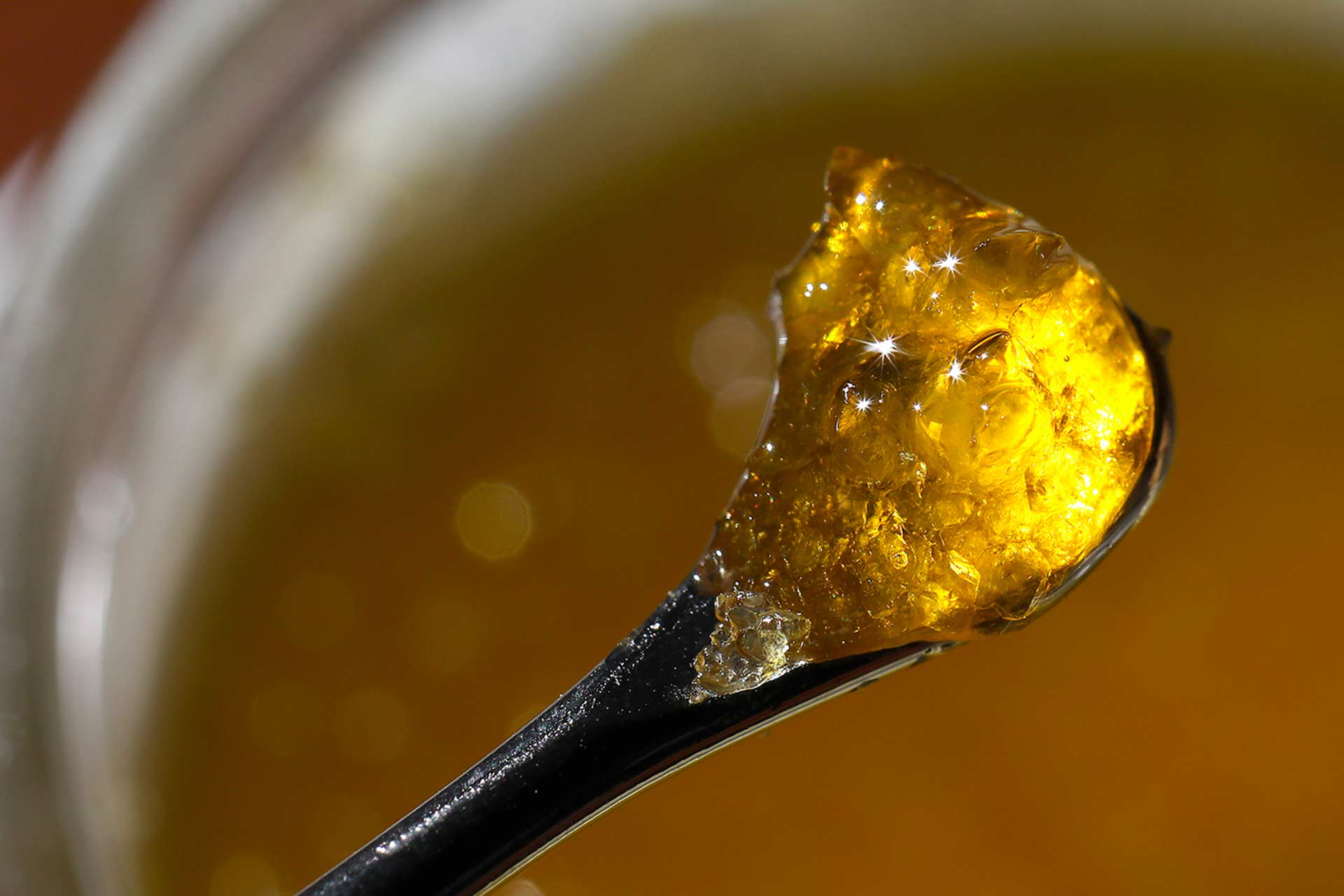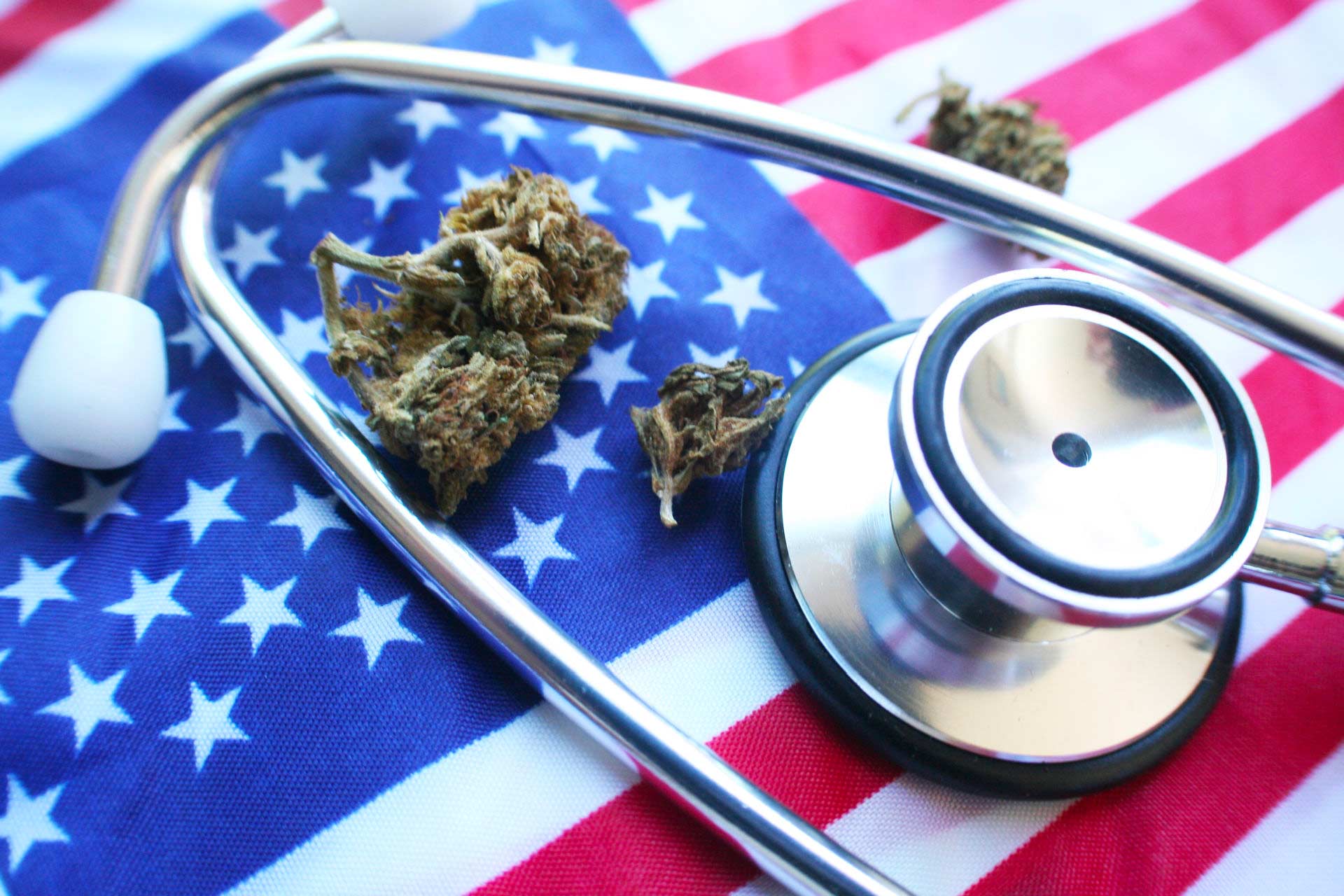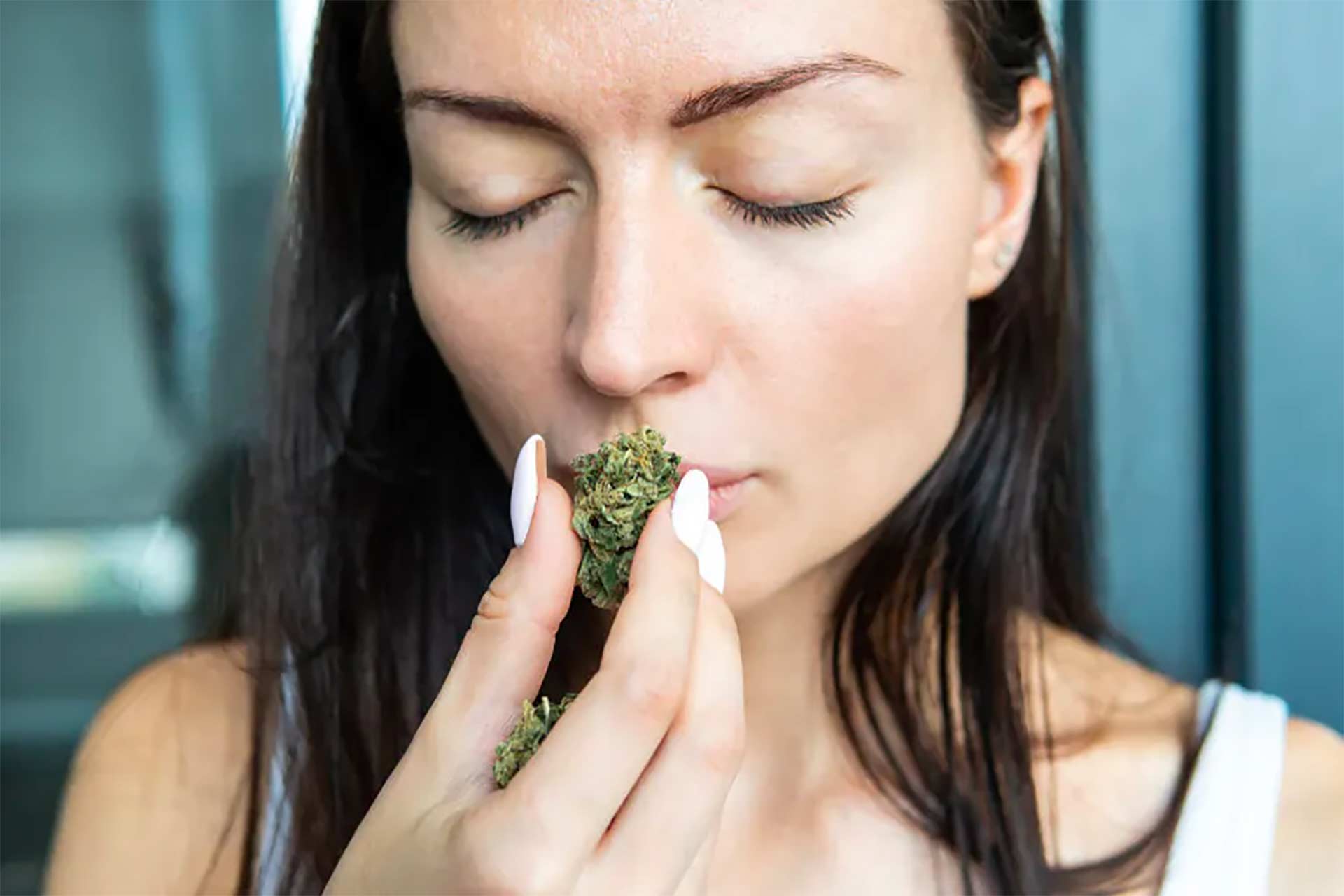Answering Your Delta-8 Questions
Written by Eloise Theisen, MSN, AGPCNP-BC, and Whittney Wacker, BSN, RN
Delta-8: An increasing popular cannabinoid on hemp product menus
In recent months, our Leaf nurses have gotten a lot of questions about Delta-8, which is sold in many states. Though Delta-8 is made from hemp, its effects are very similar to Delta-9 found in cannabis. Both Delta-8 and Delta-9 are forms of tetrahydrocannabinol (THC), which has an intoxicating effect, though the effects of Delta-8 are said to be less intense.
Hemp CBD companies have been adding this cannabinoid to their menus, offering it as a new option. Even though Delta-8 THC is readily available, quality education around this cannabinoid is missing. Consumers are confused, with questions like:
- What is Delta-8?
- Will Delta-8 get me high?
- Will Delta-8 help manage health conditions?
- Is Delta-8 legal?
- Will Delta-8 cause me to fail a drug test?
- How do I safely use Delta-8
Below, we’re sharing answers to these common questions about Delta-8. Of course, we always encourage you to call our free RN-staffed Leaf411 hotline at 844-LEAF411 (844-532-3411), as well!
What is Delta-8?
Delta-8 THC is found naturally in the cannabis plant, but only in small amounts. It occurs through degradation of Delta-9 THC. The higher amounts of Delta-8 THC seen on the market are coming from hemp. According to Project CBD, “Nearly all the Delta-8 on the market today is produced by chemically tweaking CBD in a laboratory. In other words, it is not directly extracted from the hemp plant but is synthesized from CBD that is directly extracted from the plant.”
In order to get the larger amounts of Delta-8 THC found in vapes, gummies and tinctures, CBD is converted to an isolate. From there, a solvent is added to liquify the isolate and an acid reagent is added to create a chemical reaction that produces the Delta-8 THC.
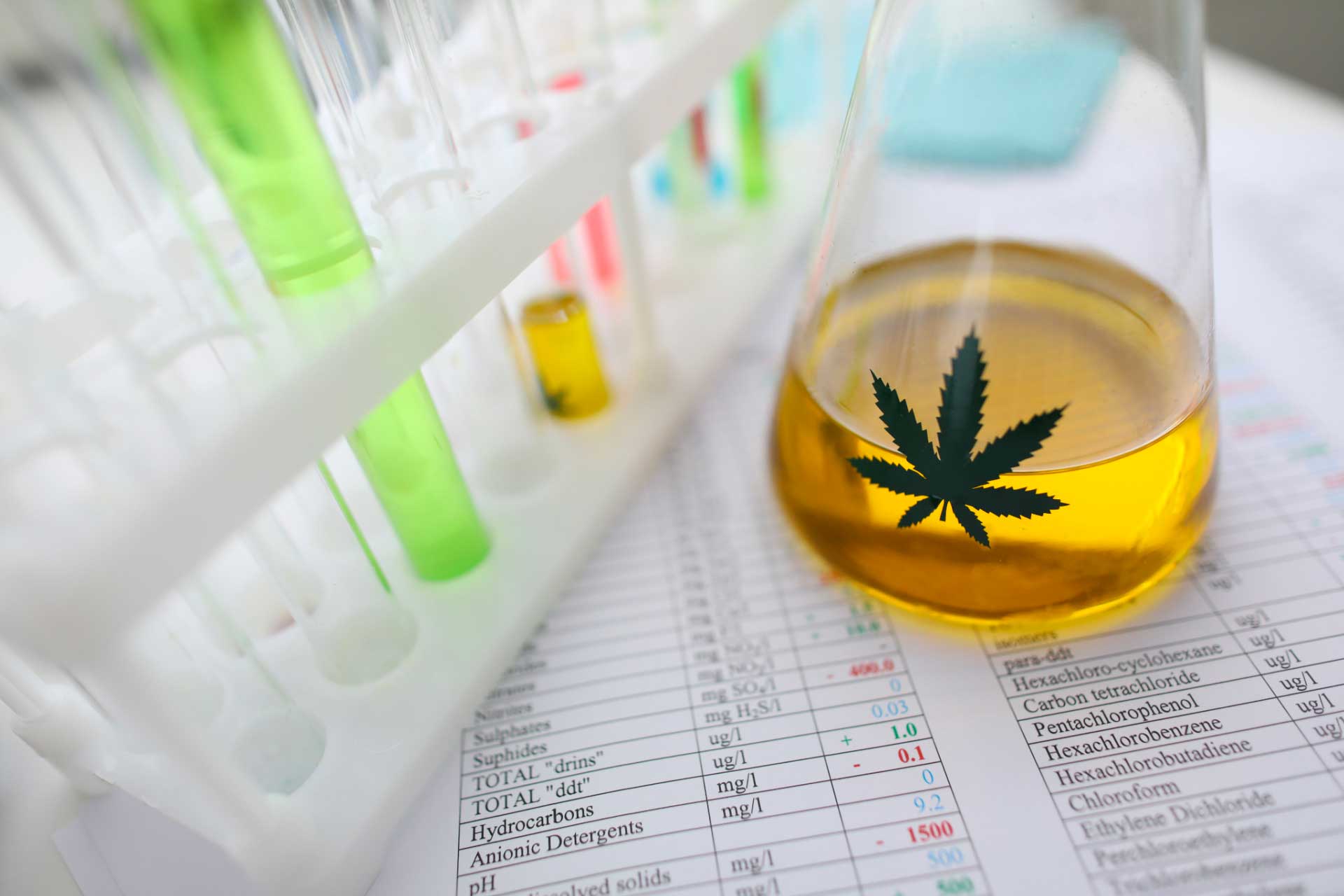
How are Delta-8 products tested for potency and safety?
Testing for Delta-8 THC in products and people is another gray area. There is no limit on how much Delta-8 a product can contain. However, in order to comply with the 2018 Farm Bill, these products must also meet federal hemp guidelines with less than 0.3% of Delta-9 THC (the other THC found in larger amounts in marijuana) at dry weight to be compliant.
Leafreport recently tested 38 products to see how much Delta-8 THC was in the product. Twelve out of the 38 products tested within 10% of the label claim, which represents 32% of the total products tested. Additionally, of the 38 products, 20 of them tested above the legal limit for Delta-9 THC.
When looking at companies who are selling Delta-8 THC, be sure to choose ones that provide a certificate of analysis (COA). Without a COA, it is hard to know how much THC or other cannabinoids may be in the product. The COA is the best way to verify the claims made on the company website.
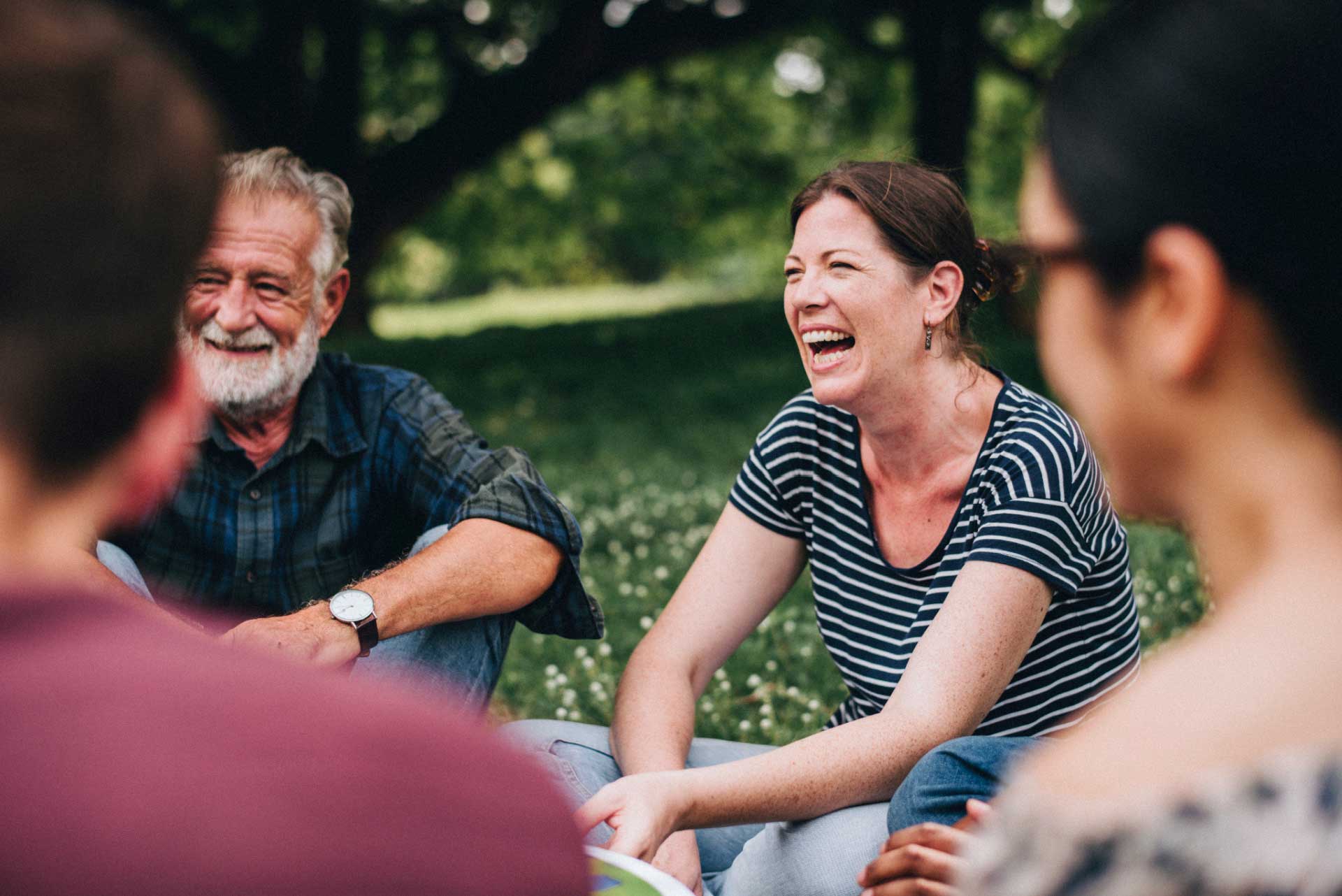
Will Delta-8 get you high?
Radicle Health describes Delta-8 THC as an isomer (same formula but a different arrangement of atoms) of Delta-9 THC with subtle differences.
We know that Delta-8 THC interacts with our endocannabinoid system (attaches to the CB1 and CB2 receptors just like Delta-9), and research suggests that it is about two-thirds as potent as Delta-9 THC.
It is likely that consuming Delta-8 THC will produce similar euphoric and impairing effects to Delta-9 THC. Consumers may also experience dizziness, drowsiness, increased appetite, feelings of relaxation, dry eyes and dry mouth.

Is Delta-8 good for pain, inflammation, insomnia or other concerns?
Research is sparse on the medicinal benefits of Delta-8 THC. A total of nine studies have been completed. Five animal studies, two meta analyses, one lab study and one human trial with eight patients. Those studies looked at Delta-8 THC to treat pain, inflammation, nausea and vomiting, and appetite stimulation and the majority were inconclusive.
With limited data, it is difficult to draw conclusions as to whether Delta-8 THC is effective at treating pain, inflammation, appetite and nausea and vomiting. Yet we see claims all over the internet promoting Delta-8 THC for a variety of conditions. The truth is the evidence is not there to support most of these claims.
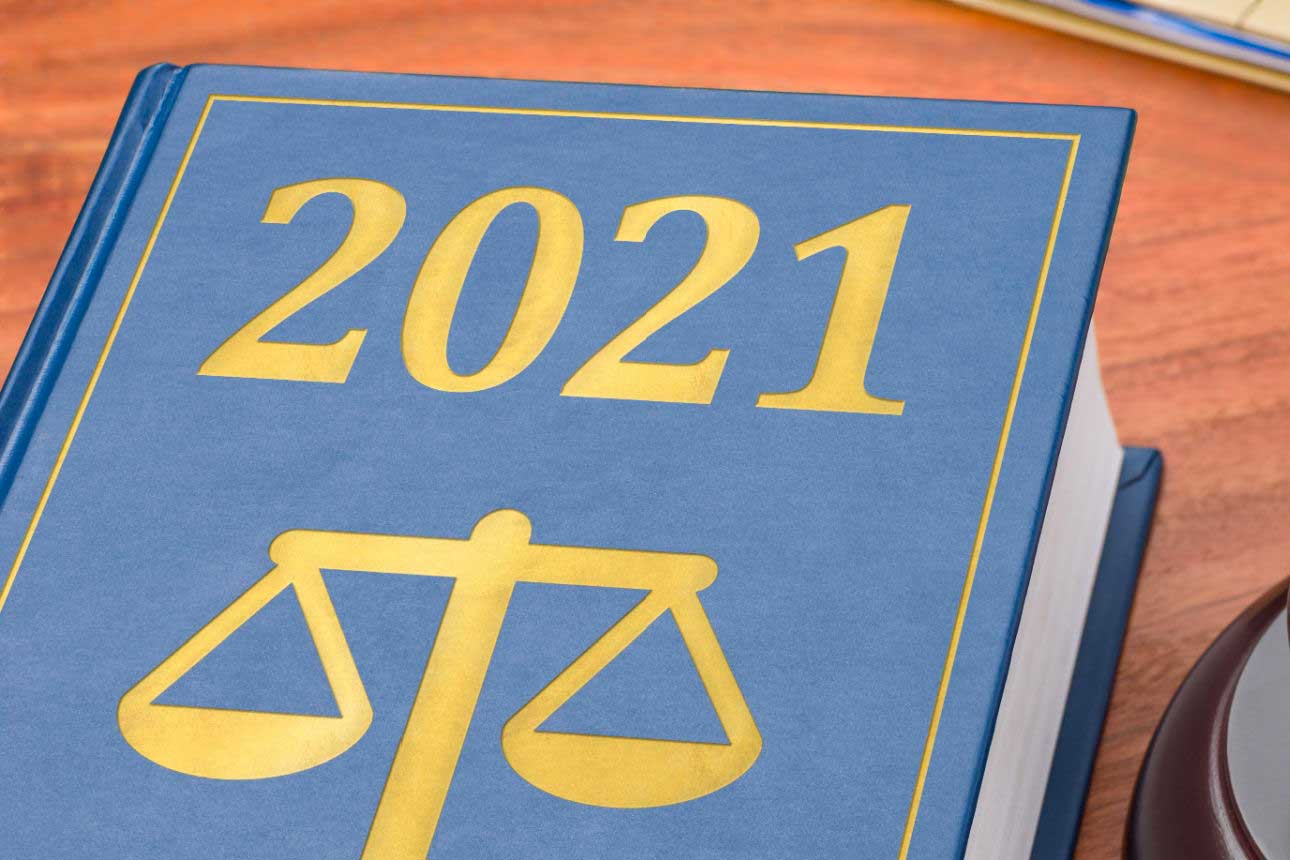
Is Delta-8 legal in your state?
Despite the lack of evidence, Delta-8 THC products have hit the market and consumer interest has exploded. Products range from gummies, vapes, flowers and tinctures and are available online or through local retailers.
Delta-8 THC is being sold under the 2018 Farm Bill which legalized hemp. Whether or not this is legal is still a bit of a gray area. The Farm Bill does not allow for synthetic cannabinoids and the current process for the majority of Delta-8 THC on the market goes through a synthetic process converting CBD to Delta-8 THC. Additionally, the Drug Enforcement Agency (DEA) stated in an Interim Final Rule, that synthetically derived substances are a schedule I drug.
It is important to know your state laws on cannabis and hemp. Some states have started to enact legislation banning Delta-8 THC. Here is a map of states that have banned Delta-8 THC, as of May 21, 2021:
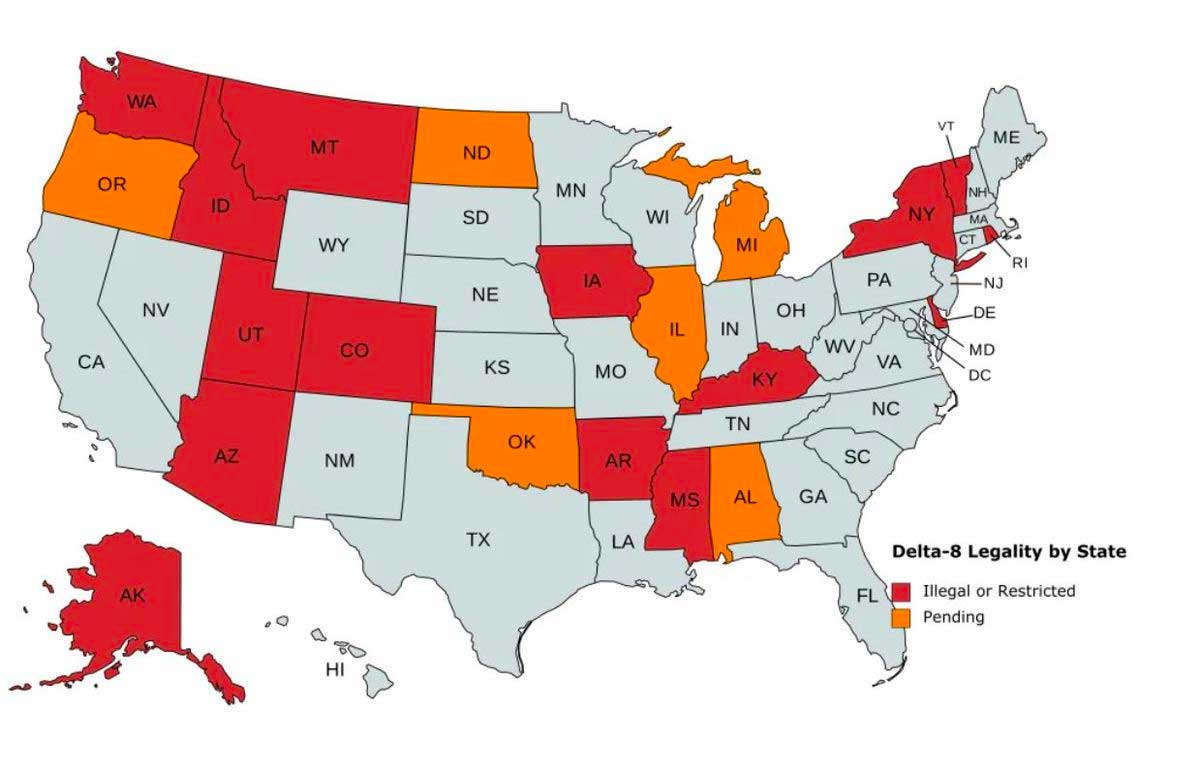
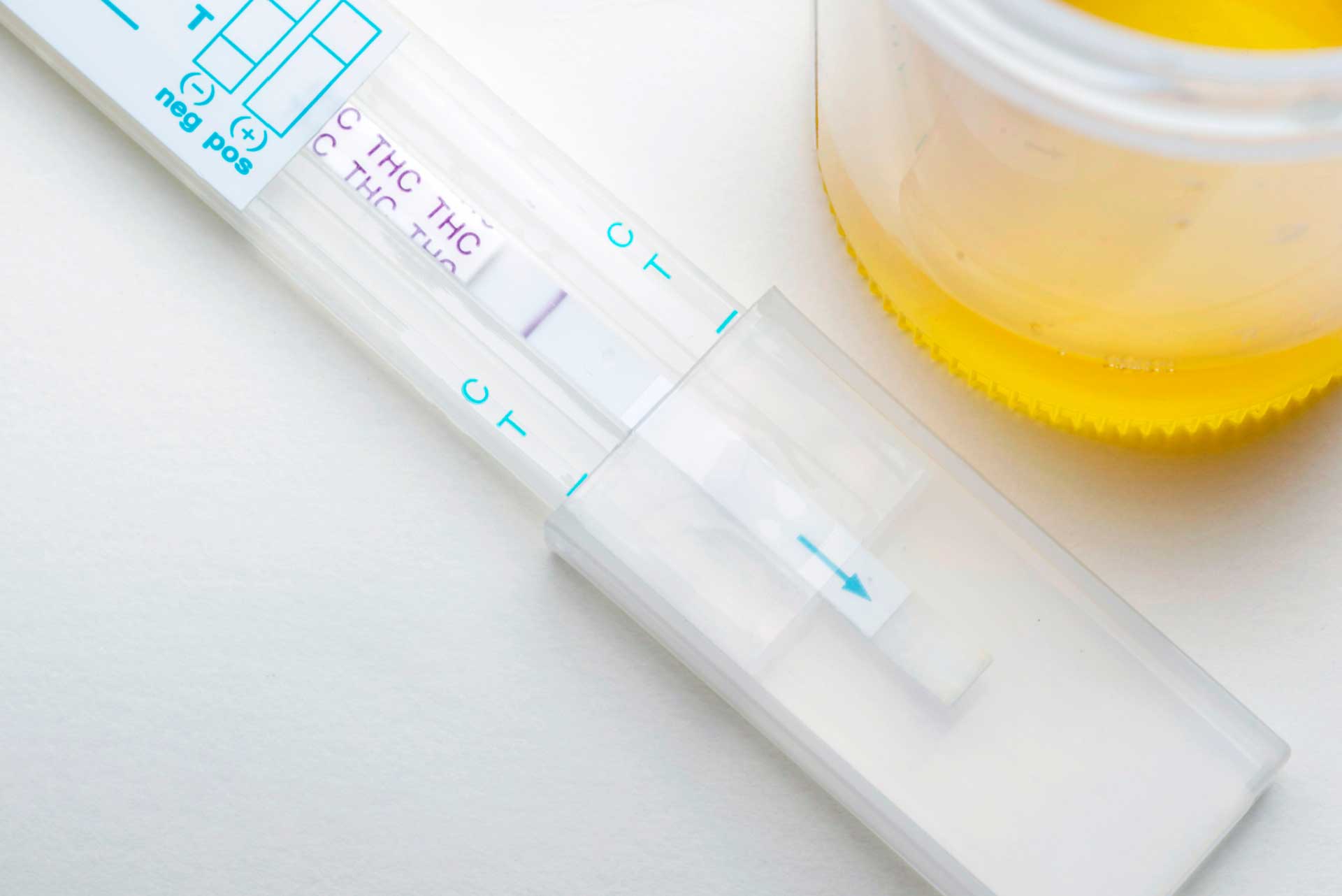
Will Delta-8 show up on a drug test?
The biggest question that remains is whether consuming Delta-8 THC will lead to a positive urine drug test. If you look on the internet, you will find a variety of blogs that claim you will and others that claim you will not.
Some of these websites state that all forms of THC can be detected in a urine drug screen and it doesn’t matter whether it is Delta-9 or Delta-8. However, there is no science to validate this claim. It gets even more complicated when you consider that most Delta-8 THC products are synthetic. Synthetic cannabinoids are not likely to be detected in a urine drug screen.
At this time, it is difficult to say with certainty whether current drug panels will detect Delta-8 THC in the urine. There is a chance that the product may contain levels of Delta-9 THC that would be detected in a urine drug screen. Until we know more about testing for Delta-8 THC, it is important to err on the side of caution and avoid consuming cannabinoids if you cannot afford to fail a drug screen.

How to use Delta-8 products
Consumer interest and use has outpaced education and research once again. While it appears that Delta-8 THC is similar to Delta-9 THC, there are still a lot of unknowns with regard to side effects, dosing and clinical applications.
For those who are curious and want to explore Delta-8 THC, be sure to look for products that are lab tested and always start low and go slow when increasing your dose.
- We suggest starting with a dose between 2mg and 5mg of Delta-8 THC.
- You may need to split a single gummy into several pieces or only use a small amount of a tincture to get a low dose.
- Remember that cannabinoids taken by mouth may take between 30 minutes and 3 hours before you feel any effects. One of new consumers’ biggest mistakes is thinking that the Delta-8 is not working and ingesting more, before the original dose had time to take effect. This can result in you feeling more intoxicated than desired.
- While Delta-8 and Delta-9 are similar, they are not the same, and many consumers report different effects from each. Even if you’re an old pro with cannabis products containing Delta-9, we suggest starting low with Delta-8 so that you can get a sense of how your body reacts to the cannabinoid.
Not sure how to split a Delta-8 edible into smaller doses? We know it can be confusing! Call our Leaf411 hotline at 844-LEAF411 (844-532-3411) and our Leaf Nurses will guide you on how to split your edibles, tinctures or other products into an optimal starting dose.
Leaf411 can help answer your Delta-8 questions
As the science around Delta-8 continues to grow, our fully-licensed nurses on the Leaf411 hotline are ready to educate and update you on this potentially therapeutic cannabinoid, regardless of whether you live in a legal state or not. Call us at 844-LEAF411 (844-532-3411).
Article Sources
- https://www.projectcbd.org/politics/delta-8-thc-controversy
- https://www.hempgrower.com/article/delta-8-cannabidnoid-how-its-made-extraction-testing-measuring/
- https://www.leafreport.com/education/delta-8-thc-products-market-report-11339
- https://www.radiclehealthcare.com/post/understanding-delta-8-thc
- https://www.radiclehealthcare.com/post/understanding-delta-8-thc
- https://doi.org/10.1002/cpt1973143353
- https://www.congress.gov/bill/115th-congress/house-bill/2/text
- https://harrisbricken.com/cannalawblog/is-delta-8-thc-a-controlled-substance-yes-no-maybe/
- https://mogreenway.com/2021/05/11/delta-8-legality-map/
- https://www.redwoodtoxicology.com/docs/services/3370_sc_faq.pdf
Manuka Honey-Infused CBD: A Natural Wellness Boost
Questions about CBD and Manuka honey? Our blog has answers about the potential anti-inflammatory and antibacterial properties of these two powerful natural compounds
Medically reviewed by Katherine Golden, RN, and Eloise Theisen, NP
Written by Denise Rustning
Hemp CBD is showing promise for managing a wide range of health concerns, from inflammation and pain to stress and sleepless nights. Some hemp brands are even adding familiar ingredients like melatonin, turmeric, skullcap and other natural compounds to create products tailored to these different needs and preferences.
On this front, one of our members, Bespoke Extracts, recently launched an updated Manuka honey-infused CBD tincture and topical cream. Their product launch piqued our interest in the antibacterial and anti-inflammatory effects that both hemp and honey share.
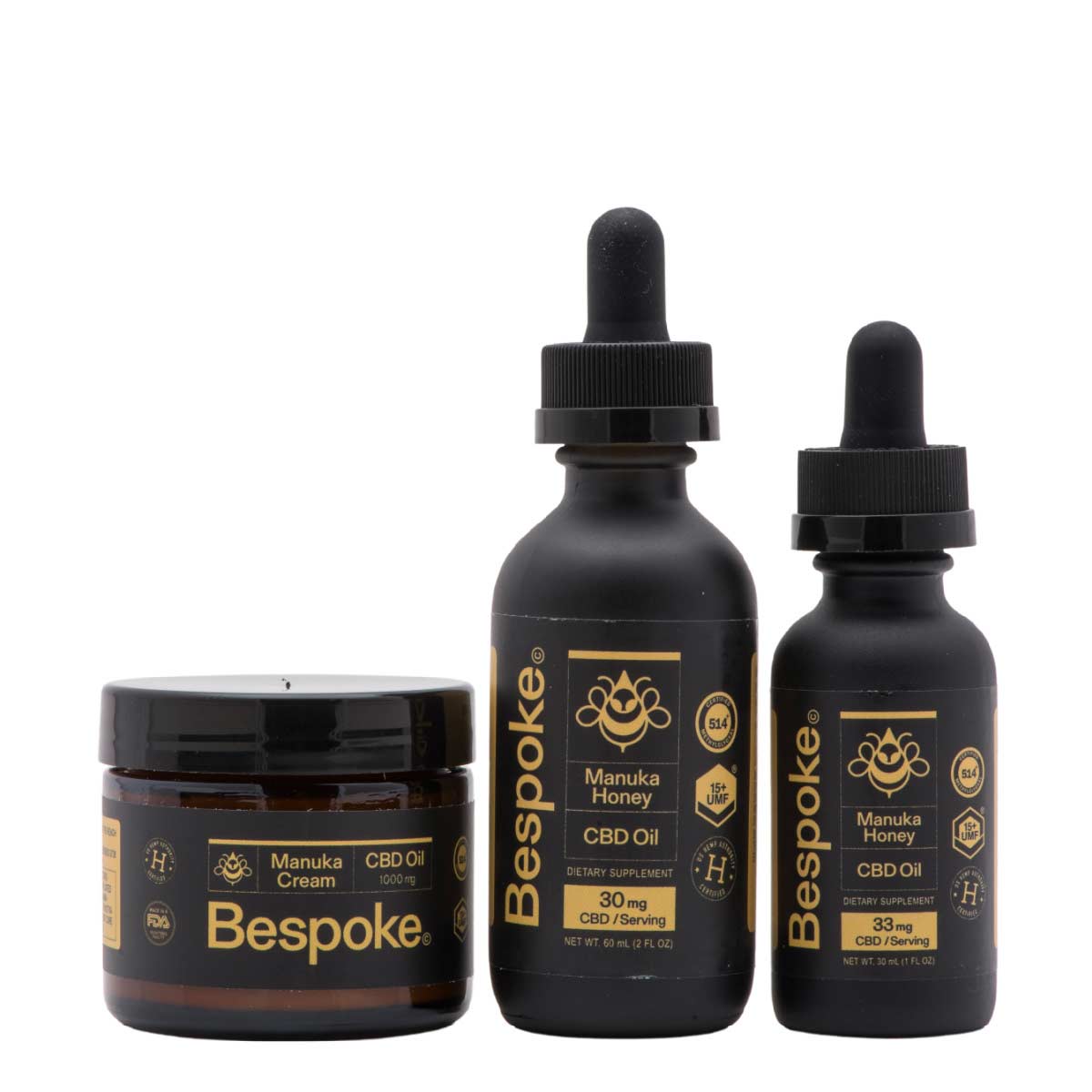
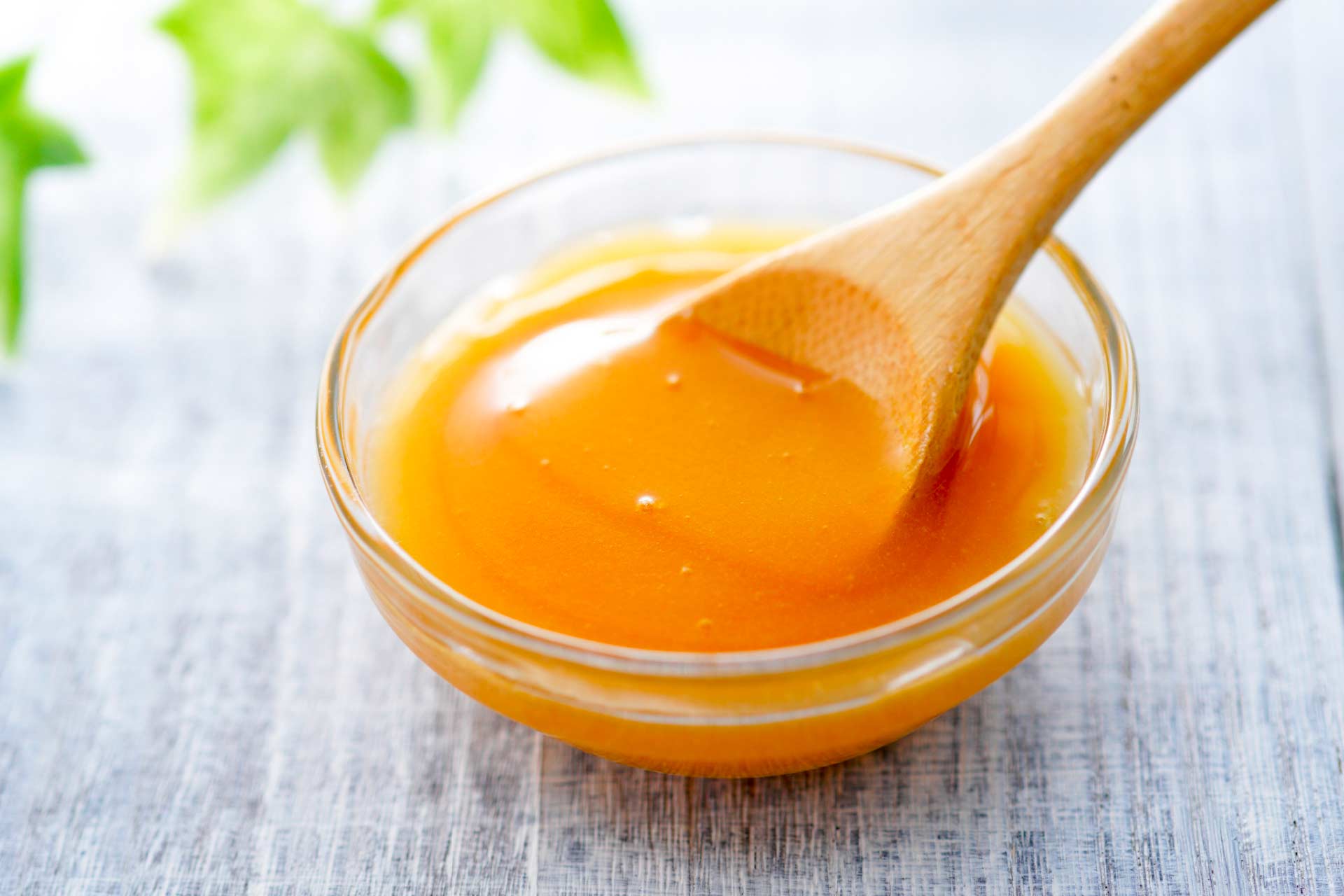
What makes Manuka honey different, and why quality matters
Manuka honey comes from bees that pollinate certain species of tea tree plants in Australia and New Zealand. The honey has a different appearance than you may be used to, with a thicker consistency and cloudy yellow color thanks to the bees’ diet. The bees’ diet also appears to give Manuka honey extra oomph when it comes to potential health benefits, but like with any other ingredient, quality matters.
“We import premium grade UMF 15+ Manuka honey directly from the source in New Zealand,” says Danny Pollack, Bespoke CEO. “There aren’t many other companies combining CBD and Manuka honey to begin with. Among the products that are available, ours is on the higher end when it comes to UMF grade, setting us apart from the competition.”
These new products join Bespoke’s line of hemp products containing CBD, CBG and CBN.
Danny pointed out the Manuka honey base is also very flavorful—his favorite way to consume it is in his tea.
“We offer several different flavors in other Bespoke hemp tinctures, including berry and citrus flavors. They taste great, but you still get that little bit of an aftertaste—that earthy hemp flavor that is off-putting to some people,” Danny said. “However, with the Manuka honey tincture, you really get the sweetness of the honey without that aftertaste of hemp. It smells and tastes great.”
Indeed, Manuka honey not only tastes good, but is also gaining attention for its unique chemical profile and health potential above and beyond other types of honey.
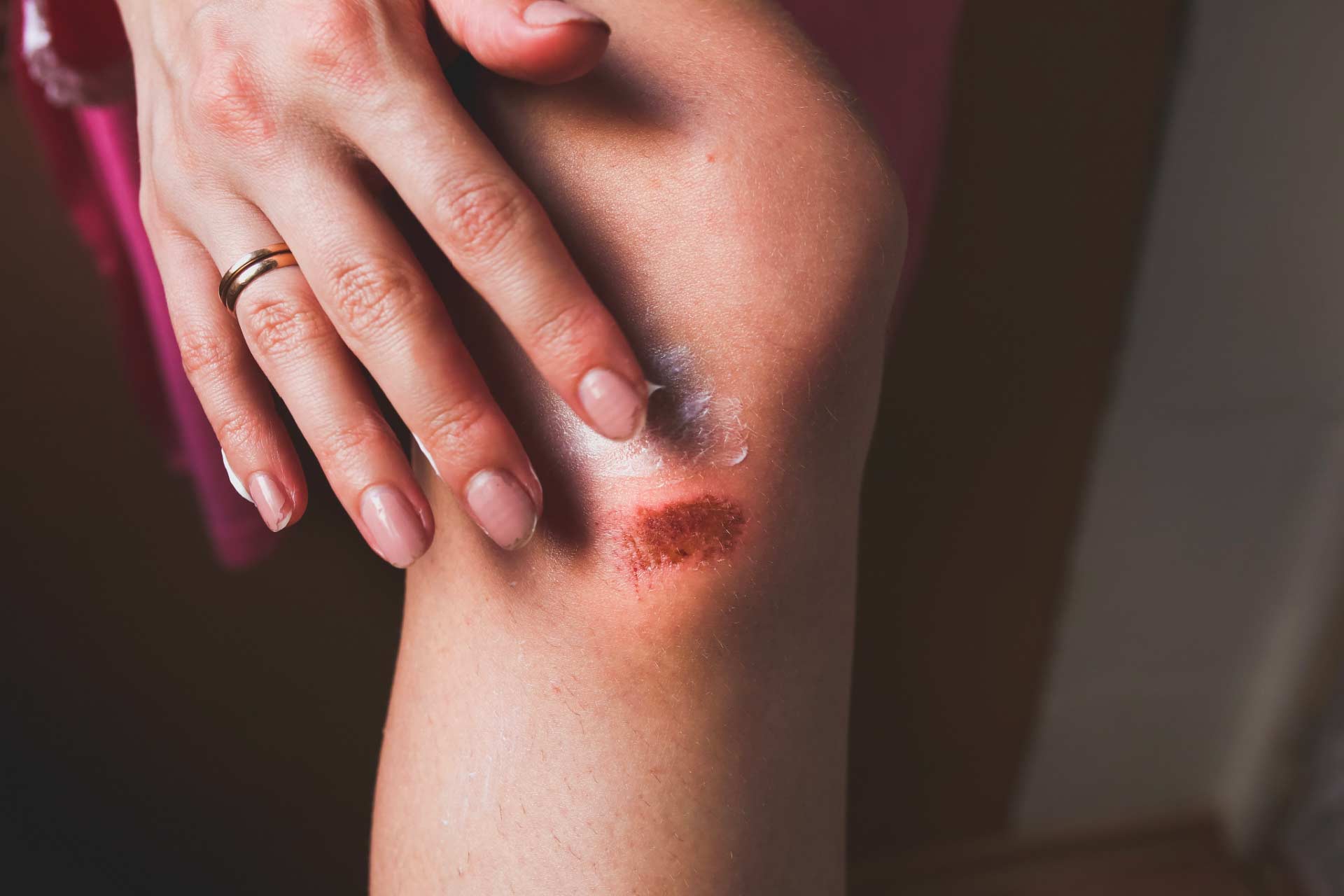
Benefits of honey for healing
Last summer, Leaf411 co-founder and CEO Katherine Golden, RN, learned firsthand about the healing power of honey when she volunteered with the City of Denver’s COVID testing program for the homeless population.
“The other nurses and I also volunteered in the day clinic which provides general medical care for the homeless. The most requested treatment was wound care. It was fascinating to see the use of honey sheets in the clinic to promote rapid healing,” Katherine said.
In fact, honey has been used medicinally for thousands of years to treat skin wounds and bacterial infections, though research has only recently begun to fully understand the underlying mechanisms.
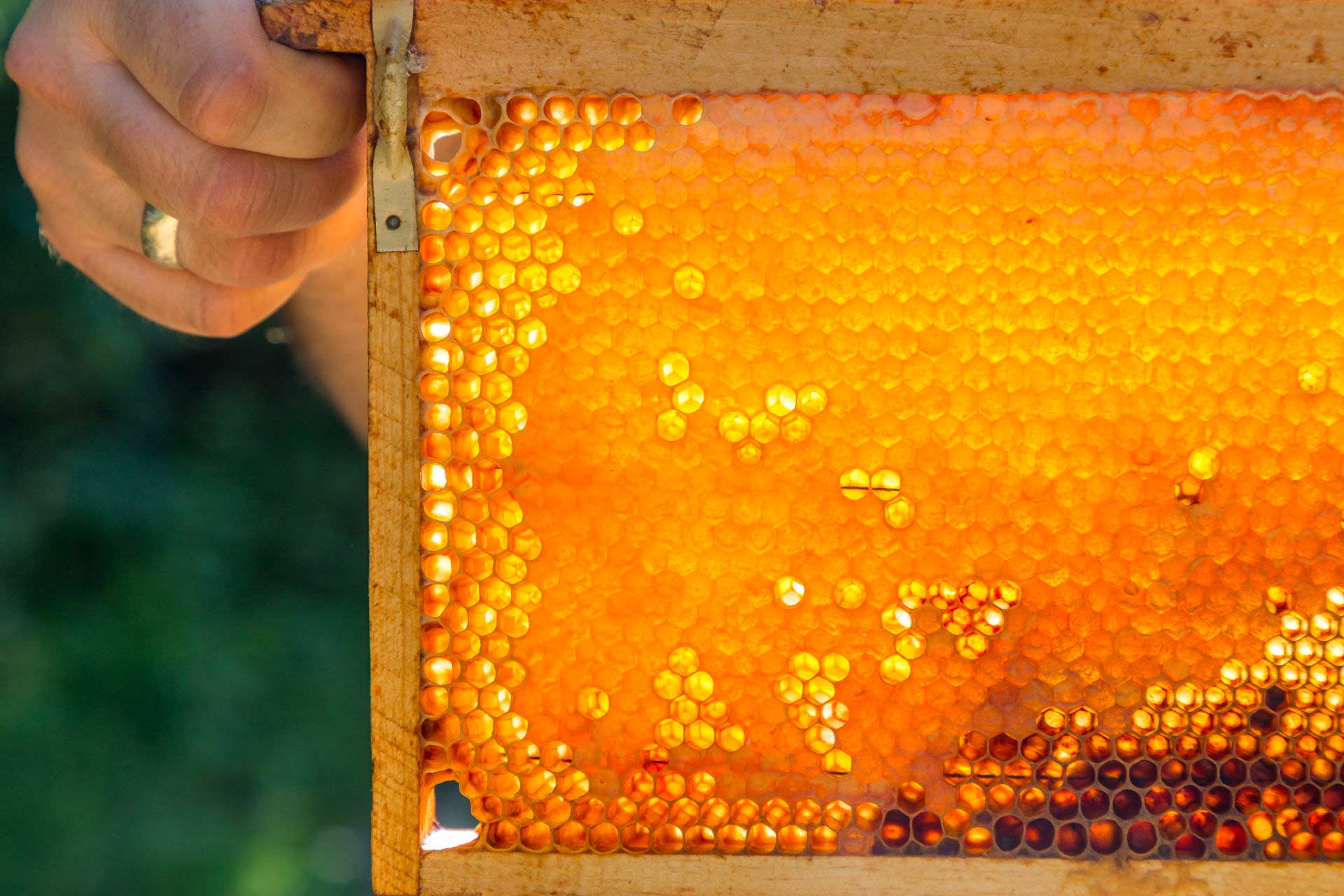
While honey may look like a simple product, studies have found that it’s quite complex, made up of over 181 different substances including natural sugars, vitamins, minerals, enzymes, amino acids, polyphenols and even hydrogen peroxide. Together, these ingredients have measurable antibiotic potential, as described in an International Journal of Microbiology article:
“Many factors have been shown to contribute to the antibacterial activity of honey, such as its high viscosity, mostly due to a high sugar concentration and low water content, which helps to provide a protective barrier to prevent infection. In addition, the mild acidity and hydrogen peroxide content have obvious antimicrobial effects.”
Other research has shown that honey may have anti-inflammatory and antioxidant properties, can serve as a useful tool when managing coughs and GI issues, and also may help with mouth sores that occur as a side effect from radiation therapy.
What level of Manuka honey is best?
Of course, not all honey is the same. The bees’ diet, along with environmental factors, impact honey’s antibacterial properties.
Even within the world of Manuka honey, quality matters, with a UMF grading system used to indicate the potency and antibacterial activity of the honey. The UMF rating can range from 5 to 25+, with a higher number indicating more of the beneficial compounds are present. You can learn more at this link.
Bespoke Extracts uses premium UMF 15+ Manuka honey sourced directly from New Zealand, which contains optimal levels of leptosperin, methylglyoxal (MGO), and other compounds that are unique to this product and contribute to its anti-inflammatory and antibacterial properties.
How to use Manuka honey infused CBD for wellness and recovery
Both hemp and Manuka honey share anti-inflammatory and anti-bacterial properties, so it’s not surprising to see the two ingredients appearing more frequently together in products geared toward wellness and recovery.
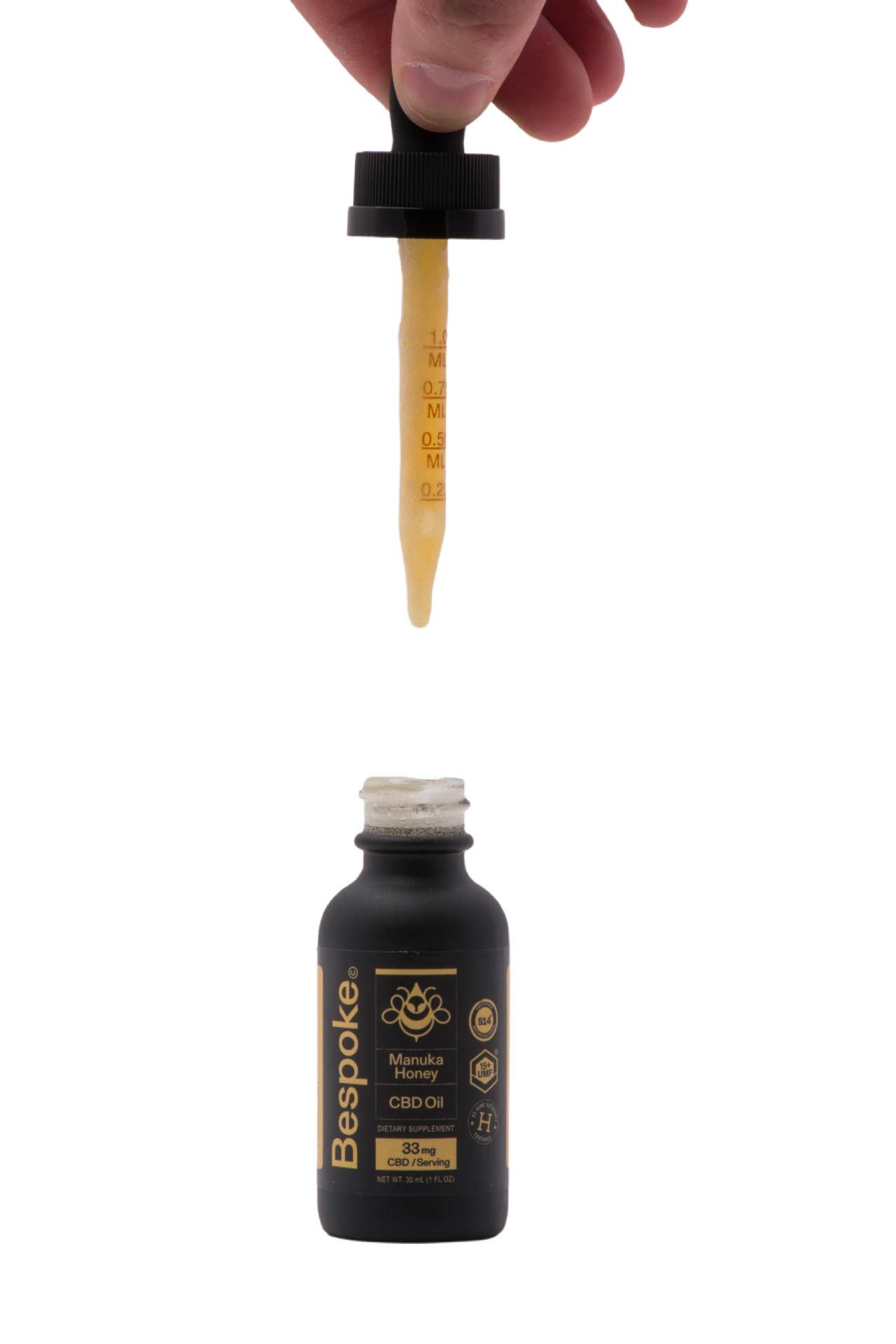
CBD Manuka honey tinctures work much like other traditional hemp CBD tinctures, providing more generalized relief from chronic conditions like pain, inflammation, insomnia and anxiety.
- Most people will feel effects within 30-90 minutes, with effects lasting 4-6 hours.
- If you are new to CBD, it is best to start with the lowest dose possible (we recommend 5mg).
- Not feeling effects yet? We suggest sticking with the same dose for at least 3 days Before increasing your dose.
- Build up your dose by adding 5mg every 3 days and slowly work your way up until you achieve symptom relief.
- If you are experienced at using CBD tinctures, you can start with your current dose or even a little less and work up from there. Not all products are created equal and taking a little less to start helps avoid potential side effects.
- Some people may find that CBD tinctures cause drowsiness, diarrhea or appetite changes. We suggest first trying new CBD products at home when you don’t have a busy schedule, just in case you have any of these side effects.
Honey, just like CBD and many other natural compounds, may interact with other medications, in particular anticoagulants like clopidogrel (Plavix) and warfarin (Coumadin), as well as certain anti-platelet drugs. If you are unsure whether your medications will be affected by CBD-infused Manuka honey, call our Leaf Nurses at 844-LEAF411 (844-532-3411) for answers to your questions, at no cost to you.
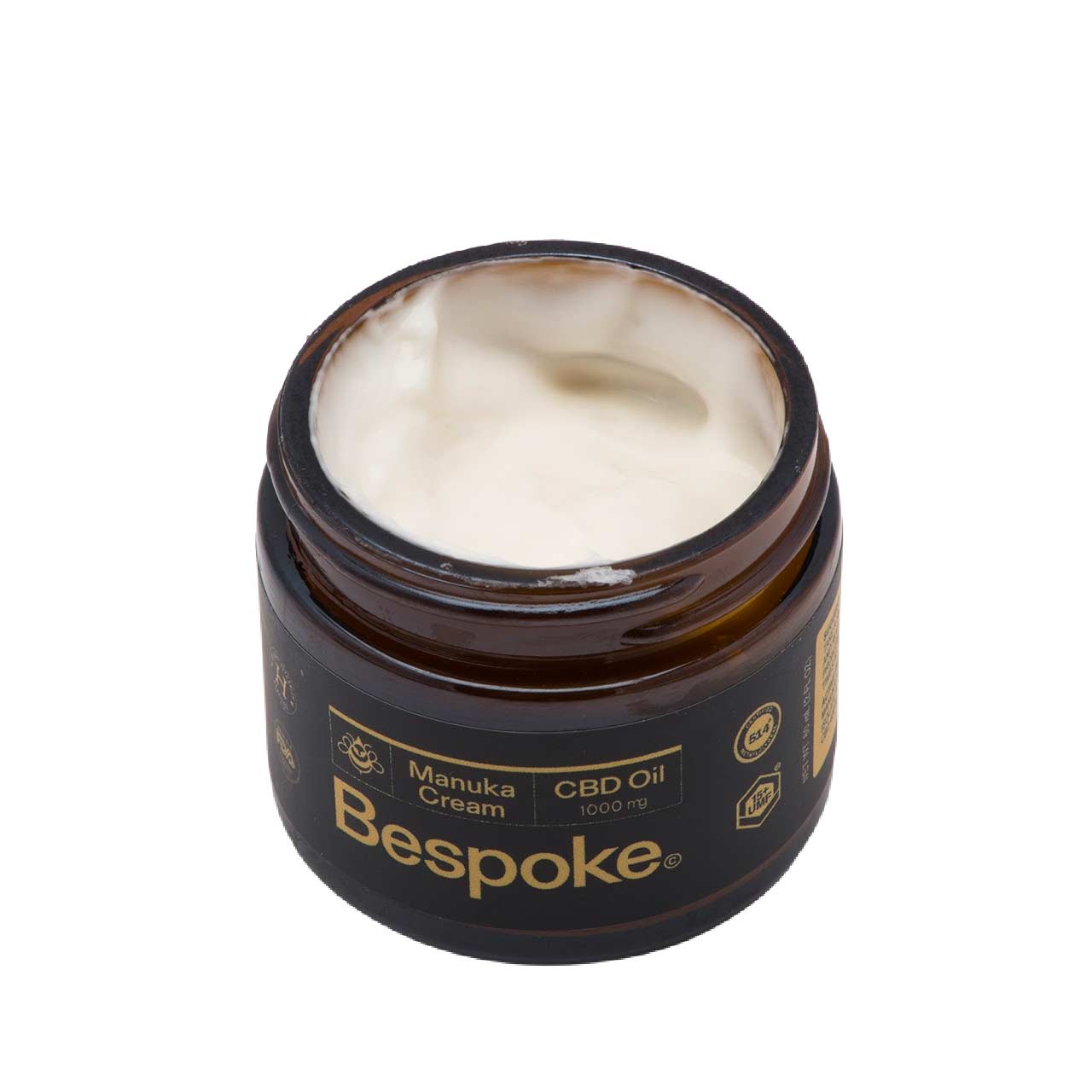
The combination of Manuka honey and CBD in products like Bespoke UMF15+ Manuka Honey Infused CBD Cream allow for anti-inflammatory benefits and pain relief without side effects that can possibly occur with ingestion. Topicals also provide a good option for targeted relief on the go, helping to relieve itching and soothe sunburns and other minor burns, as well as providing gentle relief for achy joints, muscles or other painful areas.
- Apply CBD Manuka honey topical cream to the affected area. Most people feel relief within 15-20 minutes, with the effects lasting several hours.
- Keep in mind the other ingredients in any topical products you use. Bespoke UMF15+ Manuka Honey Infused Manuka Cream also includes natural menthol and peppermint oil, so you should expect a cooling effect.
In fact, one thing we really appreciate about all of Bespoke’s products, including their CBD, CBG and CBN lines, is that they include a full list of ingredients and Certificates of Analysis (COAs) on their website.
Bespoke also offers discounts for frontline workers, U.S. military veterans and people aged 55 or older, as well discounts for shoppers who sign up for emails. Check out the Bespoke homepage for more details.
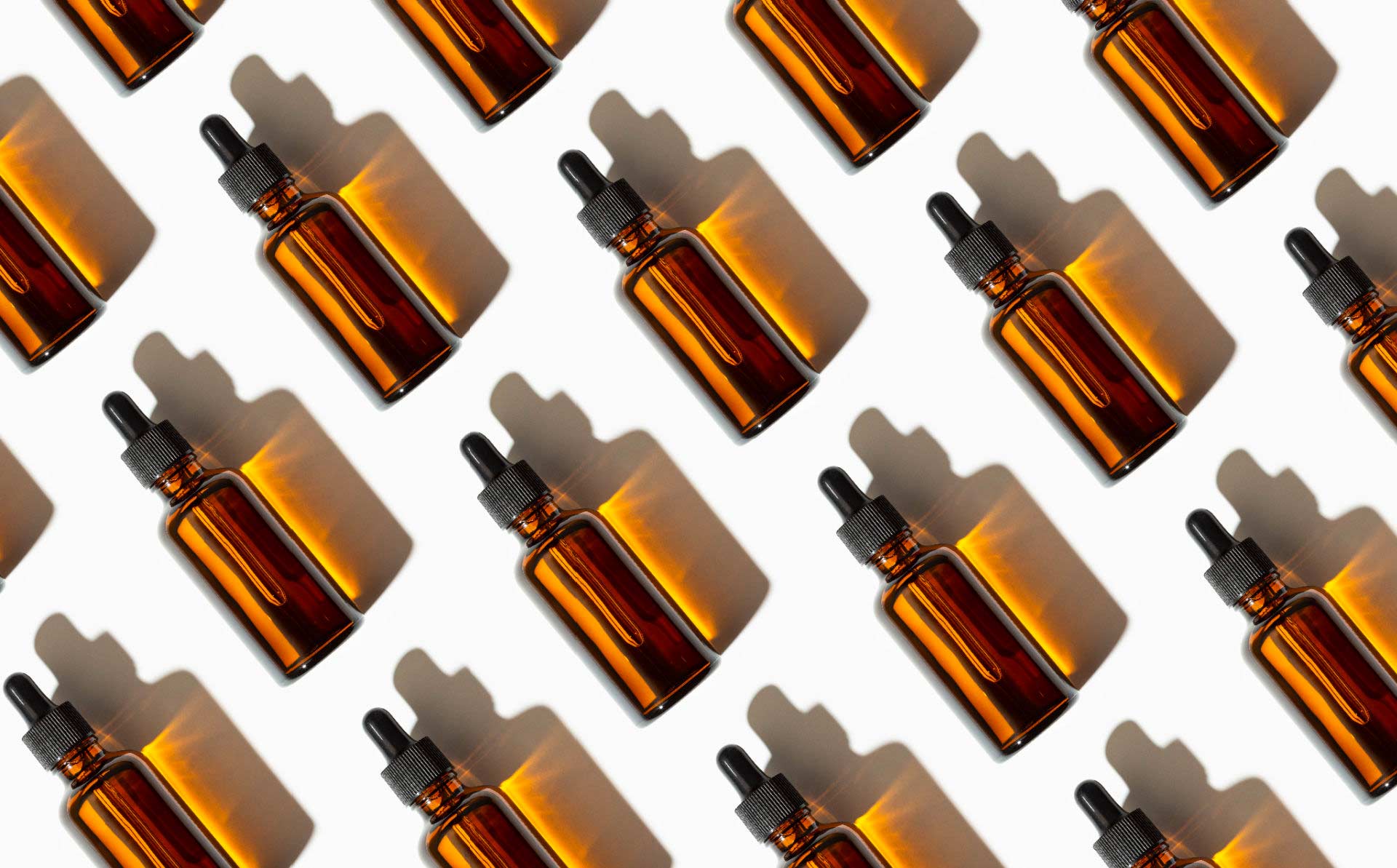
Sorting through today’s hemp CBD options
Manuka honey is only one of many natural ingredients showing up in today’s hemp products. While these products offer exciting potential, we recommend starting low with your dose and going slow to find your optimal dose.
Also, we recommend consulting with your primary care provider before adding CBD, Manuka honey or other supplements to your regimen to ensure there are no potential medication interactions or other concerns like an allergy to honey.
Our fully-licensed Leaf RNs can also help answer your questions at no cost to you. Call the Leaf411 hotline at 844-LEAF411 (844-532-3411) or chat us from our home page during hotline hours, Monday-Friday from 8:00 a.m. to 7:00 p.m. MDT.
The Leaf411 cannabis nurse hotline provides free, anonymous education and directional support to the general public about the safe use of legal cannabis. We partner with select business members who meet our rigorous standards to extend our education and outreach efforts.
How to Store Your Hemp CBD Products
We talk to experts about CBD expiration dates, and get their tips for storing hemp CBD for product potency and lifespan
Medically reviewed by Katherine Golden, RN
Written by Denise Rustning
We’ve all been there before—eyeing a recently expired hemp CBD product in our cabinet, wondering if it is still safe or if it will be as effective as when we first bought it.
This dilemma prompted us to ask manufacturers of high-quality hemp for their tips on storing CBD to ensure product quality and potency over time. We also asked about expiration dates, as well as what not to do when it comes to storing hemp CBD.
These hemp experts are made up of some of our own fully-vetted Leaf411 business members who manufacture hemp CBD products, as well as a few other industry leaders suggested to us by Alan Greenberg, Founder and CEO at CBD Garage. (See the bottom of this post for a complete list of hemp industry professionals who shared insights.)

Hemp CBD products stored in a cool, dark area. Products pictured include Wana Wellness Rest fast-acting hemp CBD tincture, BeSpoke Manuka honey-infused CBD tincture, trupura CBD Relief Cream, and Elixinol Omega Turmeric CBD capsules.
Top tip: Store hemp CBD in a cool, dark, dry area
Across all hemp CBD categories, the hemp experts agreed that storing products in a cool, dark area improves product lifespan. Fortunately, most hemp CBD products are packaged in amber or solid-colored containers that block light, making it easier for consumers to ensure a dark environment.
A dry environment can help prevent mold; however, with hemp CBD flower, an overly dry environment like the refrigerator can cause the product to dry out prematurely. (See below for tips on storing hemp flower.)
Avoid sunlight, heat and excessive exposure to air
Heat and sunlight are the biggest culprits when it comes to CBD degradation. While it may seem easy enough to avoid storing your hemp CBD under these conditions, it’s worth paying attention to special situations, like when you bring your hemp CBD with you when traveling.
CBD can also break down faster when exposed to air for a long time due to oxidation—for example, if a hemp product is left open on a countertop for days at a time. To prevent this from happening, you will want to store your hemp CBD in its original container with the lid tightly closed.
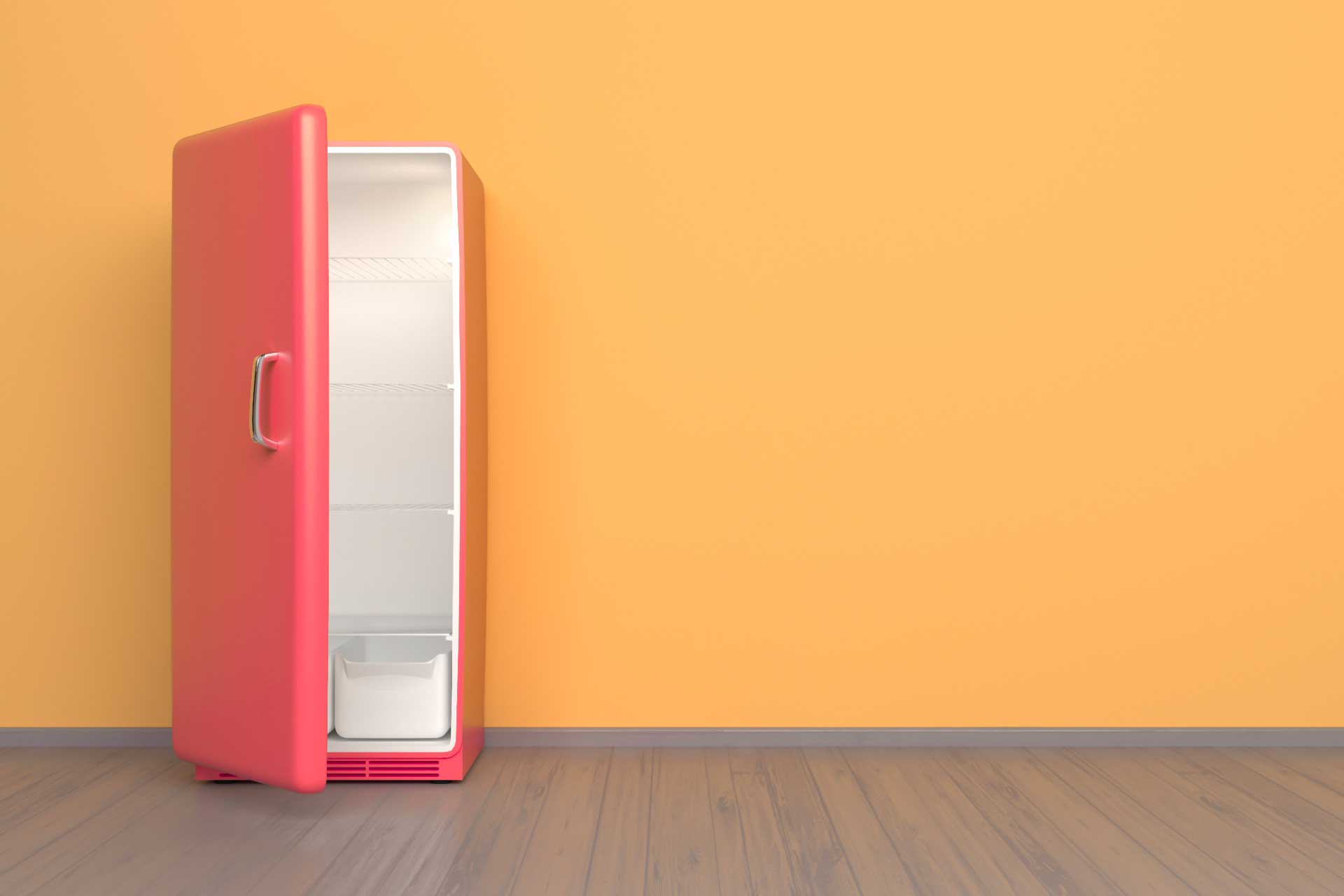
How cool is cool enough?
We can hear what you’re thinking: “When you say ‘cool,’ just how cool is that? Is it better to store my CBD in the fridge?”
Room temperature works perfectly well for most hemp CBD products. Cannabinoids from the hemp plant (CBD, CBG, CBN and others) are oily by nature. Most oils, including CBD oil, are shelf-stable at room temperature and do not require refrigeration.
Also, many hemp CBD tinctures use MCT oil, safflower oil, grapeseed oil, or olive oil as carrier oils—the base that the CBD is added to. You can think about how these oils are commonly stored unrefrigerated on dark pantry shelves—the same rules apply to CBD hemp products made with these ingredients!
In fact, in some cases, an oil-based hemp CBD tincture liquid may become too thick or difficult to use if refrigerated.
On the other hand, for some products like pills and capsules, refrigeration could extend the product’s lifespan. For example, Lauren Stall from Trill Pills says, “We only state to customers one-year shelf stability out of the fridge since that is certified by the state. However, my personal experience is that Trill Pills can be kept in the fridge for longer with no deterioration.”
Does hemp CBD stay good past its expiration date?
For hemp CBD products made in Colorado, the state sets a standard one-year shelf-stable expiration date. However, most high-quality hemp products may remain good for up to a year after the expiration date has passed as long as they have been properly stored.
Now that we’ve covered some general questions, let’s dive into the best ways to store hemp CBD tinctures, edibles, topicals, flower, vapes and transdermal products.
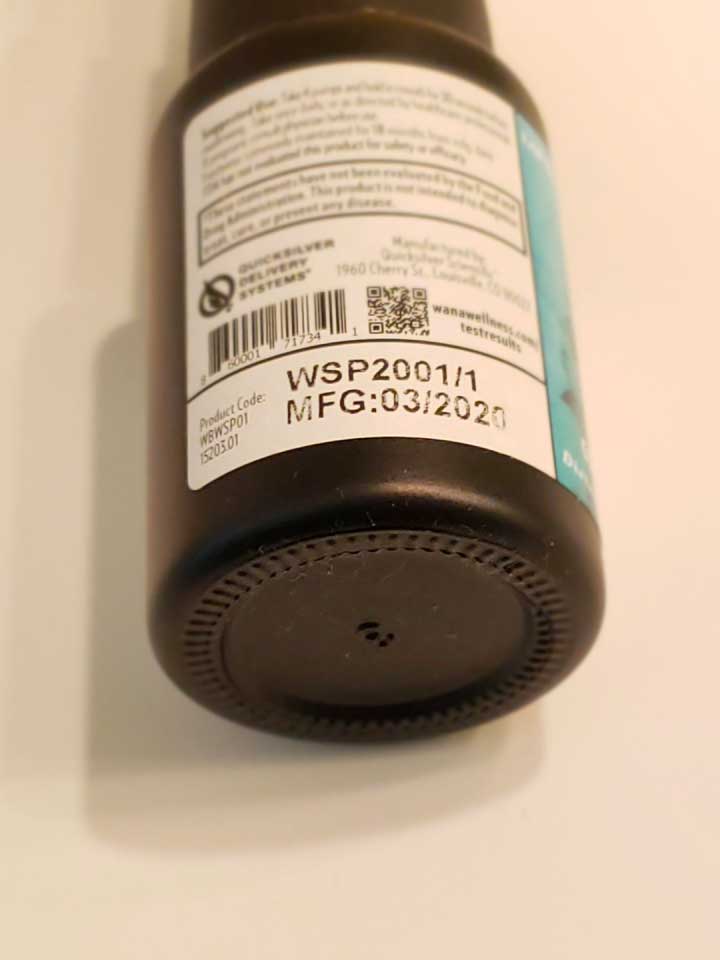
Wana Wellness Rest Quick hemp tincture bottle showing manufacture date. The tincture utilizes nanotechnology to more rapidly deliver CBD. More info here.
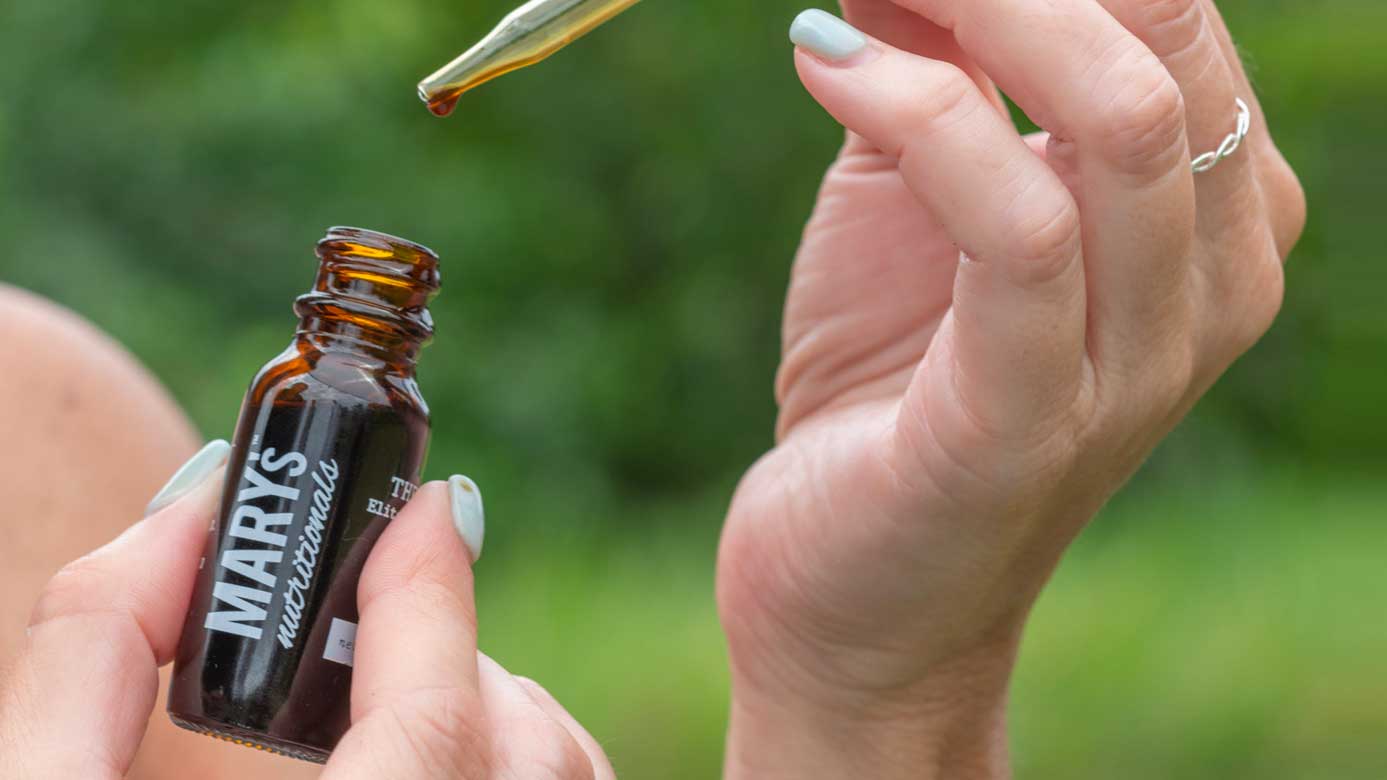
Mary’s Nutritionals Remedy full-spectrum hemp CBD tincture. More info here.
How to store hemp CBD tinctures
- Store in a cool, dark, dry area. (One exception is Wana Wellness Quick hemp tinctures, which can handle warmer temperatures due to their proprietary manufacturing technology.)
- Avoid leaving tinctures in sunny areas like on a windowsill or in a hot car.
- Shake tincture before using.
- When using a tincture dropper, do not let it touch your tongue or mouth where it could pick up bacteria that would then be transferred to the bottle. If your dropper touches your mouth or other unsterilized surfaces, it can be cleaned using soap and water and rinsing thoroughly before returning it to the bottle.
How to store hemp CBD edibles
- CBD gummies, chocolates and other hemp-infused edibles are just like any other food product when it comes to storage and product lifespan. The hemp CBD is relatively stable, but other ingredients may have additional considerations. For example, Mike Hennesy, VP of Innovation at Wana Wellness, points out that gummies may begin to dry out and lose their soft consistency over time, particularly in arid climates in places like Colorado or Arizona.
- Make sure packaging is always tightly closed to help reduce product drying out. For items like a half-used chocolate bar, store the remaining product in a sealed ziplock bag.
- If an edible tastes or smells “off” or has mold on it, throw it out. You may also want to contact the manufacturer if you believe the product spoiled prematurely despite being correctly stored.
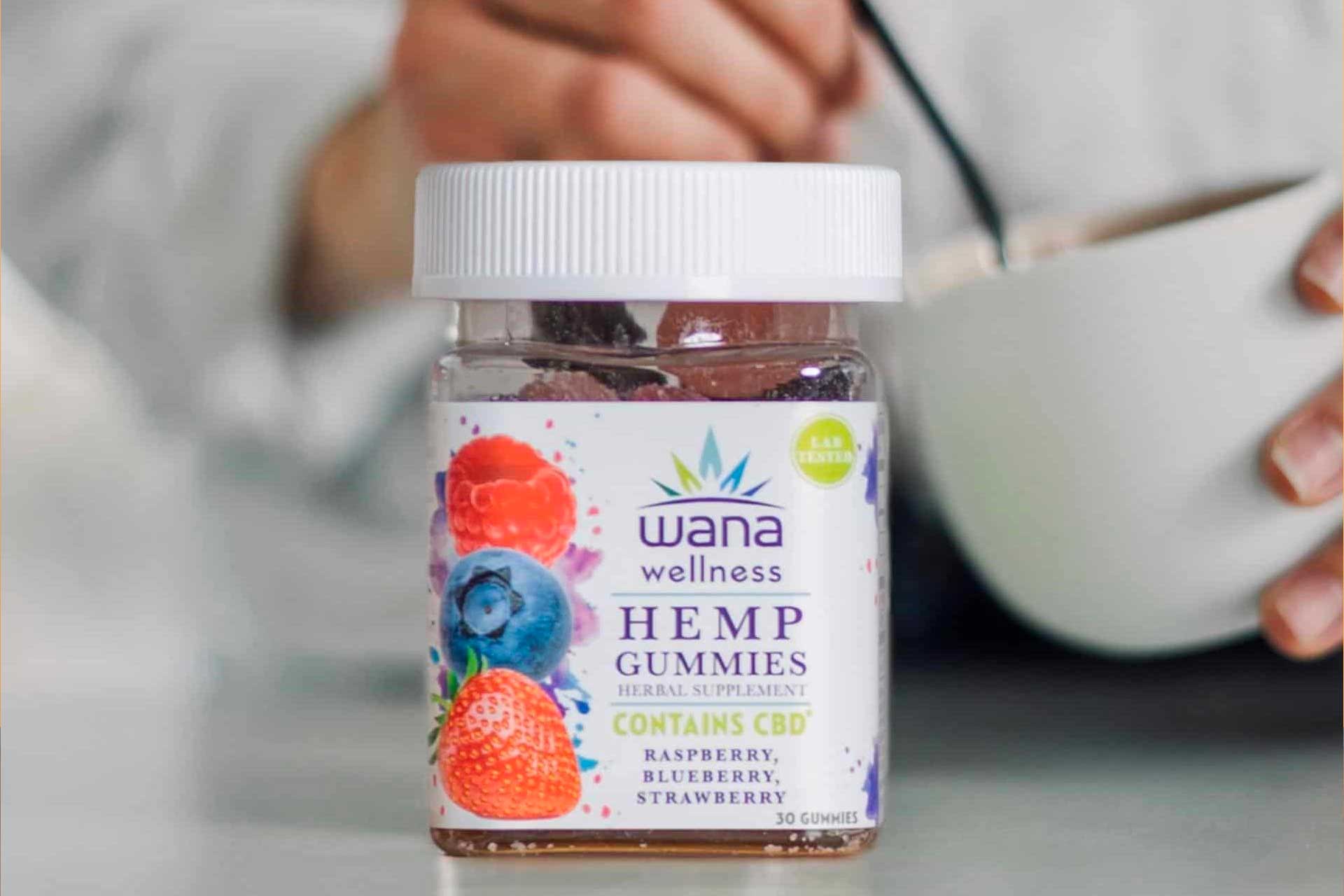
Wana Wellness Mixed Berry hemp gummies. More info here.
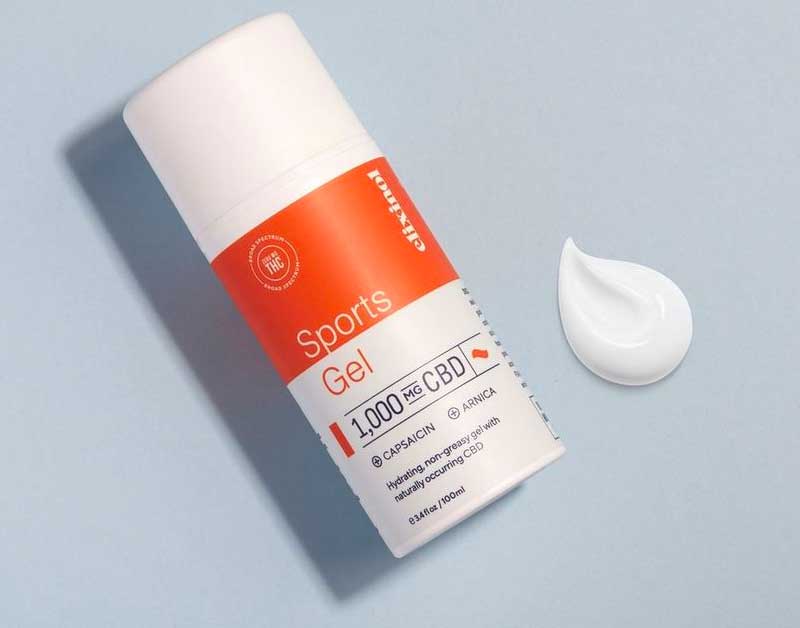
Elixinol Sports Gel topical containing CBD, capsaicin, arnica and other botanicals. More info here.
How to store hemp CBD topicals
- Store at room temperature away from direct sunlight.
- Always replace and tighten the lid on the container after use.
- If possible, use an applicator like a tongue depressor or firm cotton tip to scoop topicals out of a jar, instead of using your fingertip. This will help prevent bacteria from your hand getting into the product.
How to store CBD transdermal patches
- Store at room temperature away from direct sunlight.
- Use the transdermal patch soon after opening the package, or put the unused patch in a sealed ziplock bag away from light.
- If you are cutting a patch in half or quarters for a smaller dose, then store the remaining unused portion in a sealed ziplock bag, says Jeremy Riggle, PhD, Mary’s Nutritionals. “If stored correctly, the patch portions will stay good for up to a year. If the half or quarter sections are not stored properly, then its shelf life drops to a few months.”
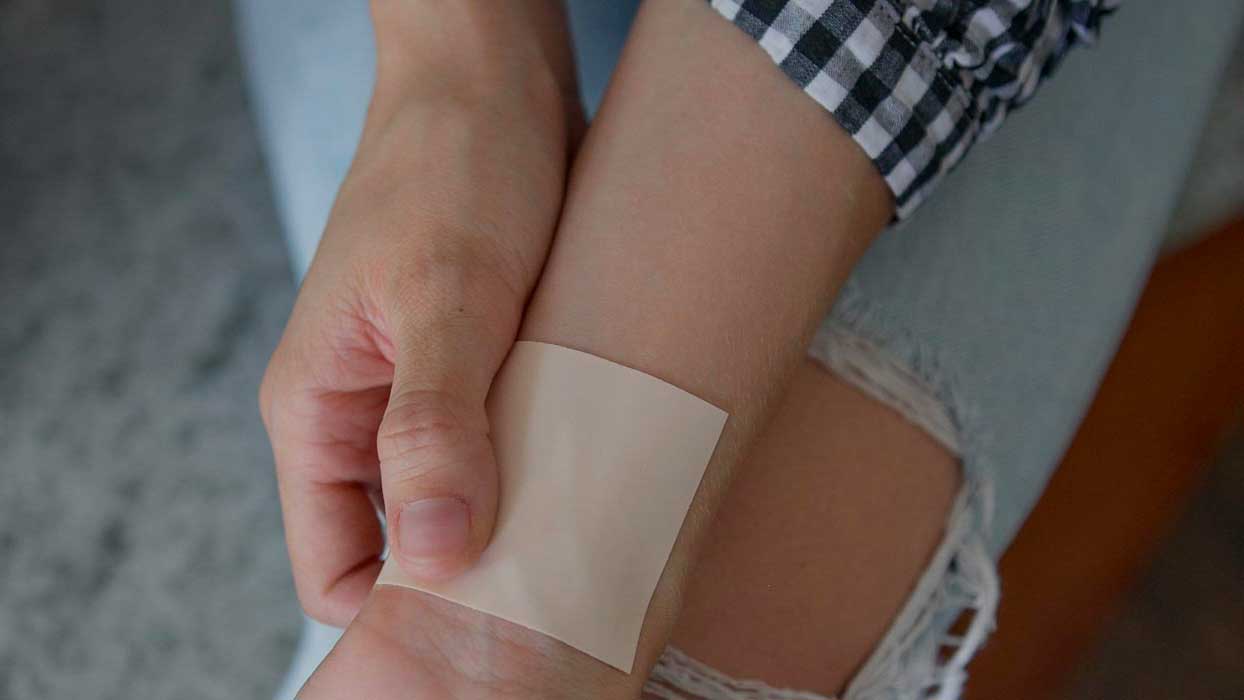
Mary’s Nutritionals hemp CBD transdermal patch allows cannabinoids to be absorbed continuously throughout the day. More info here.
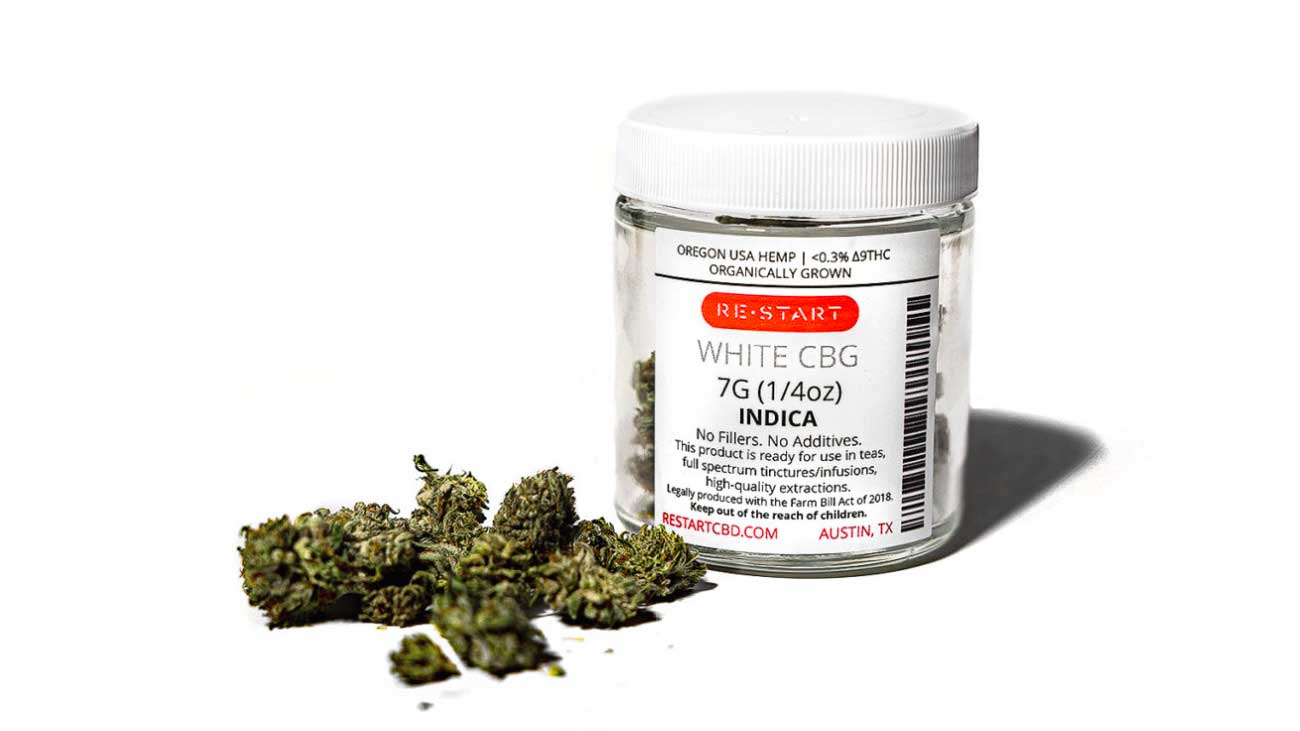
RESTART CBD hemp flower which can be smoked or vaped to provide faster onset and offset of hemp CBD effects. More info here.
How to store hemp CBD flower (buds) for freshness
- Store in an airtight glass container in a cool, dry area.
- Avoid storing in direct sunlight.
- For a partially smoked hemp pre-roll, snuffing it out by putting it in an airtight container (glass jar or the plastic tube it came in) is better than stubbing it out (grinding the end on a hard surface the same way people put out cigarettes) according to RESTART CBD co-founder and CEO Shayda Torabi. Airtight storage tubes can be found online by searching the term “doob tube.”
- When it comes to humidity and rehydrating bud, some people turn to humidity packs; however, Torabi urges caution, noting that if not used correctly, humidity packs can cause hemp CBD flower to mold, making it unsafe to use. “If you want to re-hydrate your bud, do it with small amounts of flower you are going to use within 48 hours. Don’t leave your humidity pack in the jar with your flower for extended periods of time, and make sure to follow the instructions on the humidity pack to ensure the best experience,” Torabi says.
How to store CBD vapes
- Store in a cool dry area, in an upright position to reduce the risk of leakage.
- Do not leave your vape in a car since extreme temperatures can impact the consistency of the vape liquid, as well as product quality.
Other product ingredients also make a difference
Your favorite CBD chocolate bar or flavored tincture contains hemp-derived cannabinoids, but it also contains other ingredients that impact shelf stability and overall product lifespan. Other ingredients—water-based ingredients in particular—can limit product lifespan in some cases.
Ryan Lynch, co-founder of Boulder Hemp, explains that high water content more readily supports microbial growth if the product has not been pasteurized or sterilized. Oil-based products, on the other hand, should last longer due to the lack of water content.
You only need to look as far as your kitchen to see examples of how water content impacts shelf life. Most foods with higher water content, like fruits and meats, have a shorter lifespan. They are either stored in a refrigerator or are canned, which sterilizes them and makes them shelf-stable until they are opened.
On the other hand, cooking oils are stored at room temperature even after opening. The lack of water, combined with a lack of sugar or other ingredients, makes ingredients like olive oil and MCT oil shelf-stable at room temperature for long periods of time. These are the same oils used in many hemp CBD tinctures.
In short, when thinking about how to store your hemp CBD, check the manufacturer guidelines and consider all the ingredients in your product to help guide you.
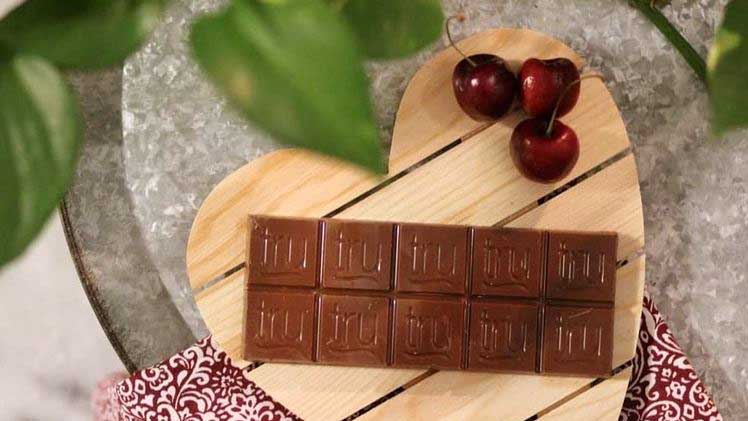
trupura CBD chocolate-covered cherry flavored chocolate bar. More info here.
Need hemp CBD answers? We can help at no cost!
Our Leaf Nurses are happy to answer your hemp CBD questions about any product on the market today—the brand does not need to be one of our member businesses, either. Call our free hotline at 844-LEAF411 (844-532-3411), or chat us from our home page during hotline hours, Monday-Friday from 8:00 a.m. to 7:00 p.m.
Hemp CBD manufacturers and retailers who shared tips for this post: Alan Greenberg, CBD Garage; Mike Hennesy, Wana Wellness; Jeremy Riggle, PhD, Mary’s Nutritionals; Shayda Torabi, RESTART CBD; Erika Sauerwein, Elixinol; Abigail Nueve, trupura CBD; Ryan Lynch, PhD, Boulder Hemp; Lauren Stall, Trill Pills
The Leaf411 cannabis nurse hotline provides free, anonymous education and directional support to the general public about the safe use of legal cannabis. We partner with select business members who meet our rigorous standards to extend our education and outreach efforts.
Recognizing Cannabis Nurses During National Nurses Week
Cannabis-trained nurses hold a unique spot in the nursing field
Medically reviewed by Katherine Golden, RN
Written by Denise Rustning
Patients have long known the potential benefits of cannabis, though the medical establishment has been slower to acknowledge cannabis’s therapeutic potential. Between federal prohibition and outdated stigmas, cannabis has faced an uphill battle gaining credibility among many healthcare providers. However, as additional states legalize and research rapidly grows on cannabis’s potential as an alternative to opiates and other pharmaceuticals, more doctors and nurses are giving cannabis a fresh look.
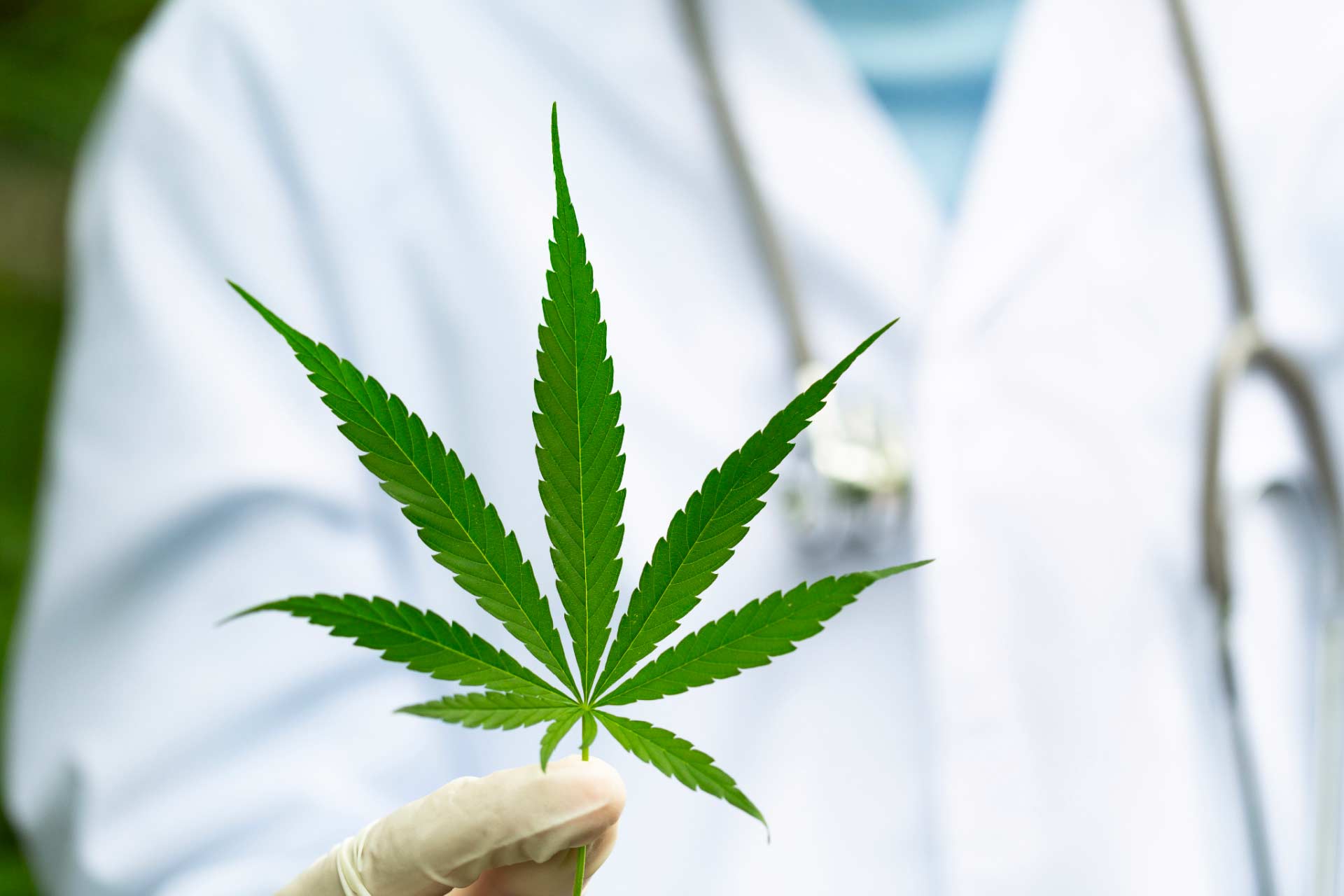
Healthcare pioneers have long supported medical marijuana
Pioneering nurses and doctors have been chipping away at cannabis misconceptions and stigmas for over 50 years. In 1971, Dr. Lester Grinspoon published Reconsidering Marihuana, supporting the safety and efficacy of cannabis. Ironically, when he first began researching cannabis his goal was to prove the plant was dangerous, but the research resoundingly said otherwise. (The late Dr. Lester Grinspoon is the father of Dr. Peter Grinspoon, keynote speaker at our most recent Leaf Learning Series.)
Dr. Lester Grinspoon wasn’t the only healthcare professional interested in cannabis therapeutics prior to legalization. The organization Patients Out of Time was formed in 1981, and the American Cannabis Nurses Association (ACNA) was first envisioned at the Fourth National Patients Out of Time conference in 2006, with ACNA formally founded in 2010. Our own Leaf411 Chief Nursing Officer and Board President Eloise Theisen, AGPCNP-BC, is the current ACNA President, and all our Leaf Nurses are members of this visionary organization.
Unique challenges in cannabis nursing
Nurses have been on the forefront of cannabis therapeutics all along, often with very little professional support and at risk of losing their nursing licenses or jobs. In many cases, these nurses became interested in cannabis after seeing its benefits firsthand in patients they were caring for, or after diving into research on cannabis as an alternative to medications that have worrying side effects.

Unlike their nursing colleagues in more conventional specialties, nurses pursuing cannabis specialization have often had to go outside of their organization and spend their own money on professional development. These nurses also miss out on bonuses and incentives that large healthcare organizations often offer for other speciality certifications.
Needless to say, these nurses—including our own Leaf Nurses—are driven by a passion to provide patient-centered care that addresses the whole person and considers all available research-backed options to restore health and quality of life.
Fortunately, when it comes to healthcare the tides are turning. In 2016, the American Nurses Association (ANA) released a position statement in support of cannabis, urging reclassification to allow for more robust clinical research on the efficacy of marijuana and related cannabinoids. Two years later, in 2018, the National Council of State Boards of Nursing (NCSBN) released guidelines for nurses caring for patients who use medical marijuana. Eloise played a central role in developing a nursing continuing education (CE) module for the ANA on this topic, and led creation of a clinical dosing regimen to the cannabis space.
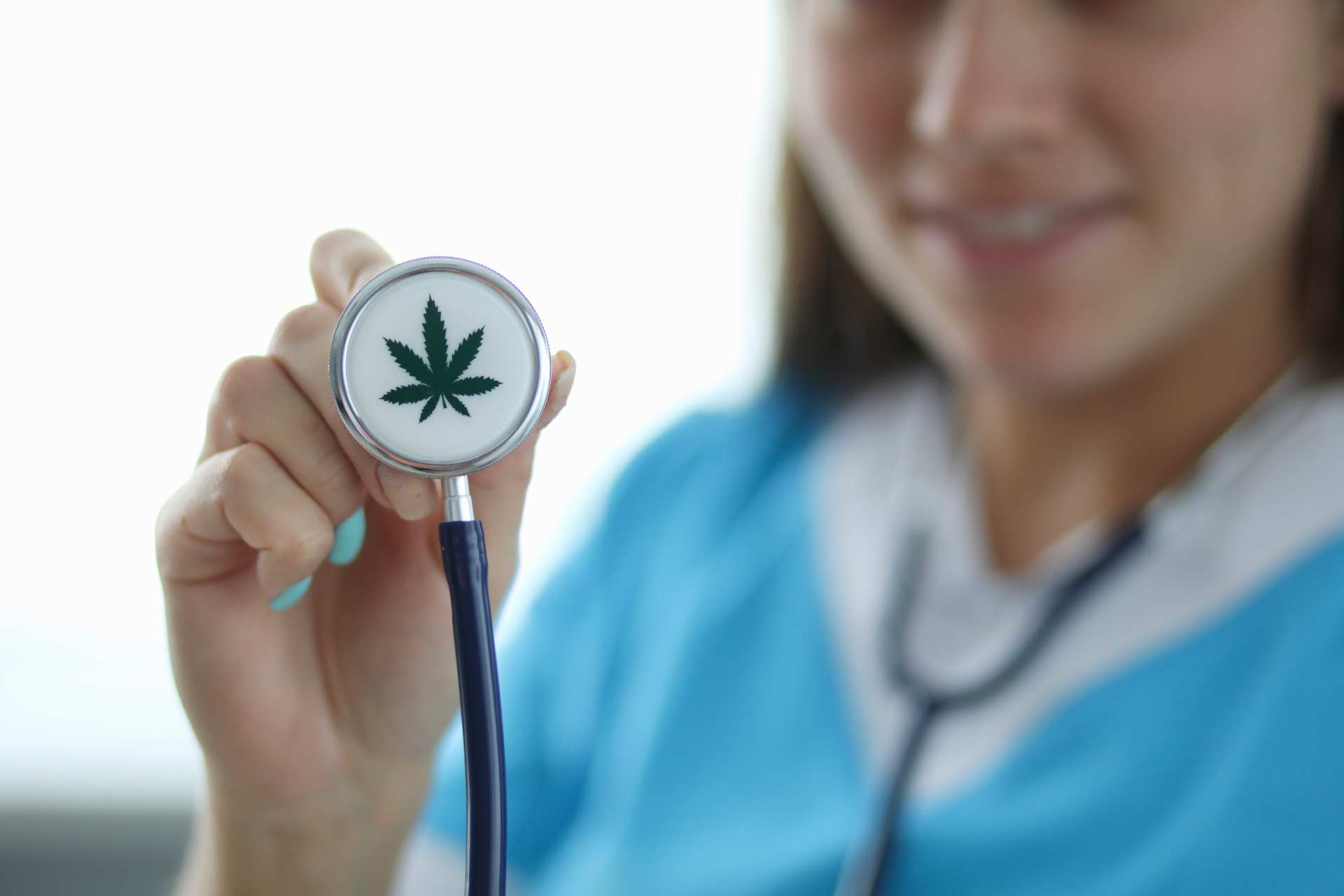
Cannabis nurses offer knowledge in an emerging field
For now, cannabis nurses like the Leaf411 Nurses who staff our hotline hold a unique place in healthcare. More people are accessing plant medicine, yet many mainstream medical providers don’t have the necessary background or professional education to answer patients’ questions about cannabis therapeutics. Cannabis-trained nurses help fill that gap.
At Leaf411, we’ve seen the demand on our hotline, with calls increasing by 50% during the first two months of 2021, and we only expect that demand to increase as more states legalize medical and adult-use (recreational) cannabis. Public support for cannabis is also at an all-time high, with 91% of U.S. adults saying medical and/or adult-use cannabis should be legalized, according to a Pew Research Center report released in April 2021.

Access to legal cannabis is expanding and attitudes are changing, but patient resources remain scarce. We launched the nonprofit Leaf411 hotline with the goal of providing balanced, accessible cannabis information to the public while also paying our fully-licensed Leaf Nurses a fair market rate, acknowledging the time and resources they have invested into pursuing a cannabis specialization.
We help patients and consumers cut through marketing claims and anecdotal data to find cannabis and hemp CBD product types and potencies that fit their goals, lifestyles and overall health regimen. We are not beholden to one brand, but instead help consumers sort through the options where they live, whether in a fully legal state, medical-only state, or even an area where cannabis has not been legalized yet hemp CBD is available.
During National Nurses Week, we want to acknowledge our Leaf Nurses’ commitment to making the Leaf411 hotline a leading resource for cannabis patients and consumers. To the best of our knowledge, we are the only RN-staffed cannabis hotline in the United States that provides this service for free to the public, and we couldn’t do it without the incredible passion and dedication that our nurses bring to their work.
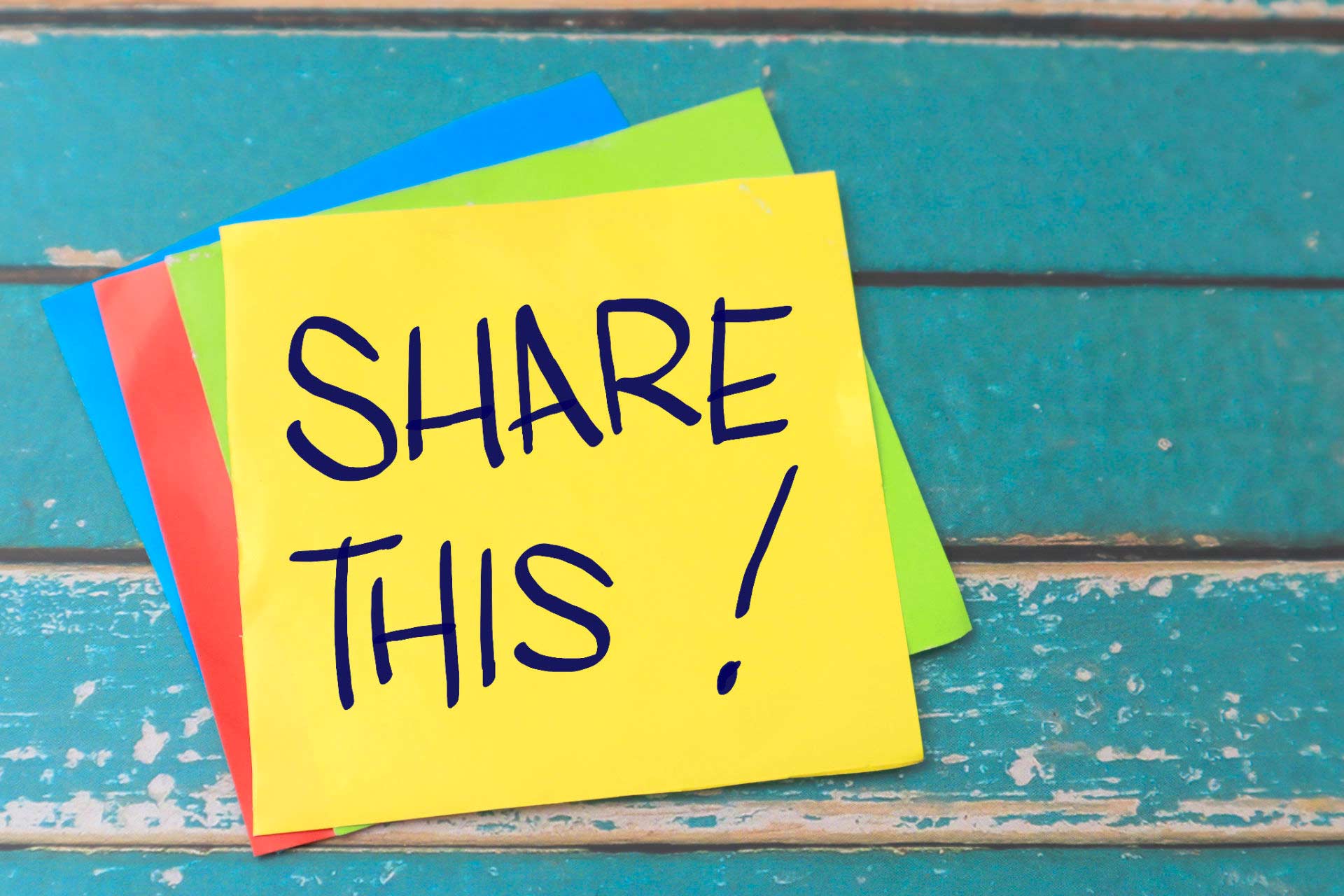
Spread the word about Leaf411 and help us grow!
One of the best ways you can support Leaf411 is by spreading the word about our service:
- Have a friend with questions about cannabis? Point them in our direction.
- Visiting your favorite dispensary for your cannabis medicine? Mention how Leaf411 has helped you, and suggest that they look into a business membership to help support patients like yourself.
- Know a physician, nurse or other allied health professional with questions about cannabis therapeutics? Point them to us—we also serve as a resource for healthcare professionals.
We also appreciate individual donations, no matter how big or small. Visit this link to learn different ways you can support Leaf411’s work via direct donation or Amazon Smile.
For cannabis businesses, a Leaf411 business membership provides a valuable educational resource for your customers while also demonstrating that you care about healthcare inequality. Leaf411 business membership can also set you apart in the increasingly crowded cannabis and hemp CBD marketplace, an issue we tackled in a recent blog post.
We have revamped our business membership model to meet you where you’re at, whether you are a newly-launched brand or an industry heavyweight looking to make your mark on the future of patient-centered cannabis education and support. Keep an eye on our Business Membership page for more details, and be sure to sign up for our newsletter below!
Is Live Resin Cannabis Worth the Cost?
Taking a closer look at what makes live resin different and its potential therapeutic benefits
Medically reviewed by Katherine Golden, RN
Written by Denise Rustning
Live resin is really all about terpenes, the delicate aromatic plant compounds that pack a therapeutic punch but can be destroyed during conventional extraction processes. Live resin is extracted using specialized processes that preserve terpenes and other plant compounds, retaining more of the whole plant instead of adding terpenes back in later on.
These terpenes play a big role in the effects you get from different cannabis chemovars (strains), a topic we’ve covered before on the blog.
As dispensary shelves become more crowded, cannabis manufacturers are looking for new ways to differentiate and offer products that meet unique consumer needs and tastes. Products containing live resin, including concentrates, vapes and even edibles, are one way manufacturers are looking to stand out. But from a consumer perspective, is live resin worth seeking out?
What is live resin?
Live resin is full-spectrum concentrate made from freshly harvested cannabis plants that are quickly flash frozen, retaining most plant compounds, including the delicate trichomes containing terpenes and flavonoids. This differentiates it from other concentrates made from dried and cured cannabis plants.
(Wondering what trichomes are? Tomatoes are another familiar plant with trichomes. If you’ve brushed across the tiny hairs on tomato leaves and stems, releasing a strong-smelling substance, then you’ve had a firsthand experience with fresh trichomes!)
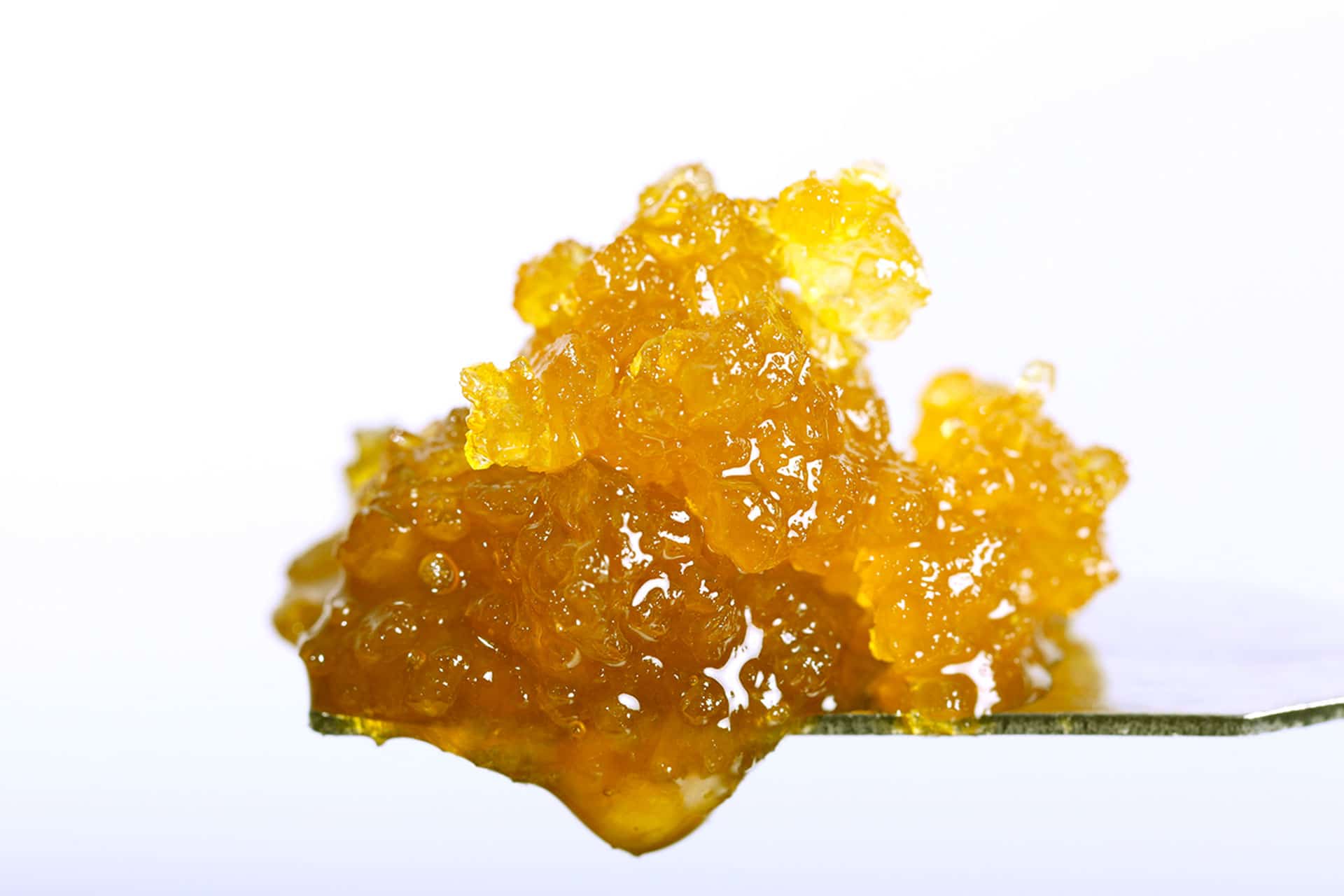
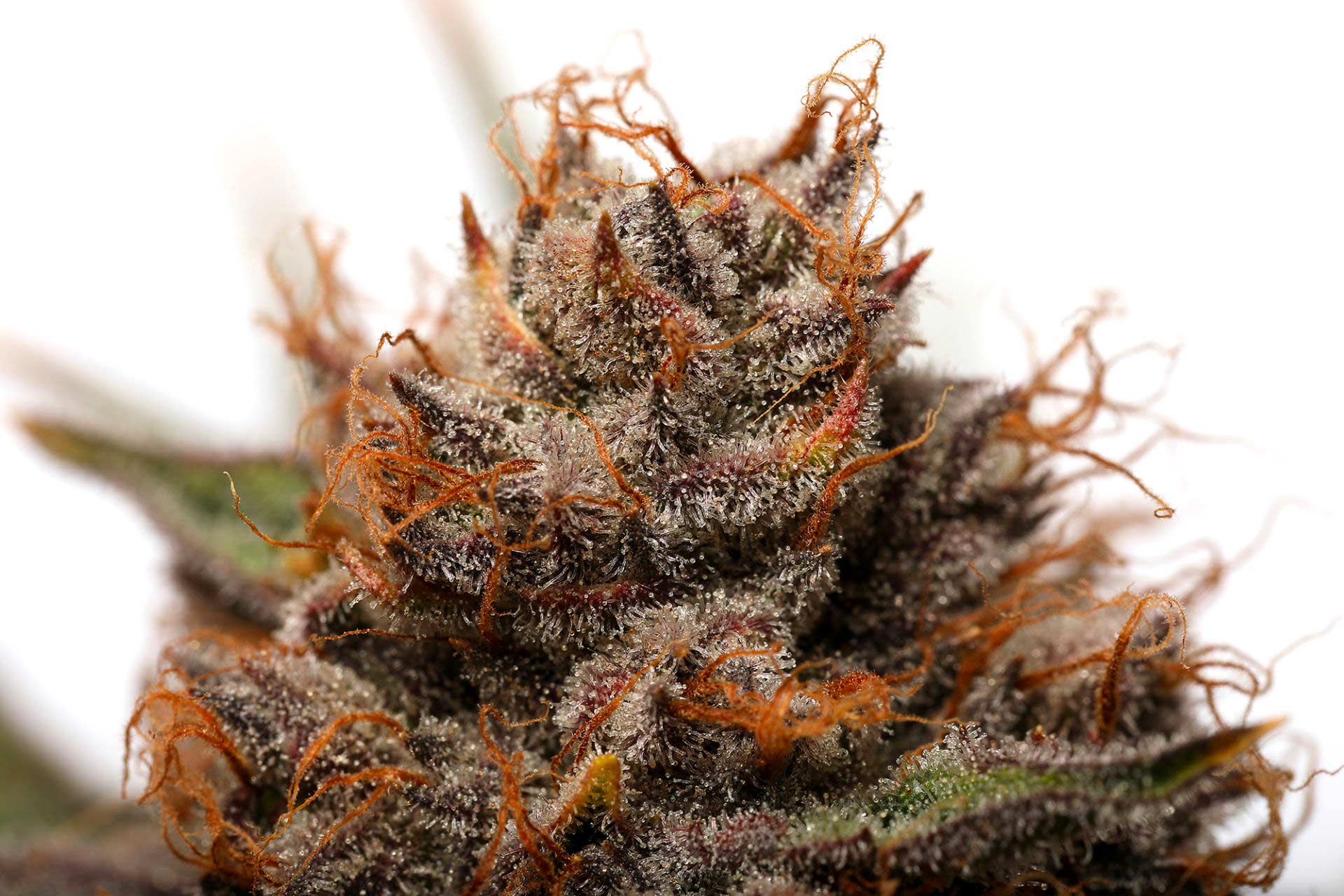
How is live resin produced?
Back to our live resin. The plant flash-freezing process is followed by carefully controlled extraction at low temperatures, retaining all the plant compounds. Some popular extraction methods include hydrocarbon extraction and butane hash oil (BHO) extraction.
It’s important to note legal cannabis manufacturers use modern laboratory equipment and follow commercial fire and safety protocols to ensure the extract is safely produced and tested for any residual solvents. Butane hash oil extraction is something you should NOT try at home!
The live resin extraction process contrasts with more conventional methods where cannabis plants are first dried and cured with heat and decarboxylation to create THC distillate. Depending on the product type, manufacturers may re-introduce terpenes, CBD and other cannabinoids, along with flavoring and other ingredients later in the production cycle to create specific product effects.

Is live resin better than THC distillate products?
Does live resin’s unique extraction process make it superior to products made with THC distillate? Not necessarily.
Live resin is only as good as the quality of the plants that went into its production. In addition, the live resin extraction process is complex and time-consuming. If a manufacturer takes shortcuts, they risk losing valuable terpenes or end up with a product that contains residual solvents.
Also, THC distillate made from dried and cured plants often proves more efficient for ingestible products because it can be more precisely measured into a uniform dose.
Both budget and personal preferences also come into play. You may try a live resin product and love the effects and flavor or alternately be left wondering what the hype is all about.
When it comes to therapeutic benefits, live resin may have an edge, given that it preserves more of the whole plant compounds, including a higher concentration of naturally occurring terpenes than you’ll find in dried flower. Terpenes play an important role in cannabis’s healing power, with a wide range of effects. In a previous blog, we provided tips on how to identify the best terpenes for your needs.
However, everyone’s endocannabinoid system is just a little bit different when it comes to cannabis, which really is individualized medicine. Our Leaf hotline nurses are experts when it comes to terpenes and the pros and cons of live resin products. They are ready to help with your questions via our free hotline at 844-LEAF411 (844-532-3411).
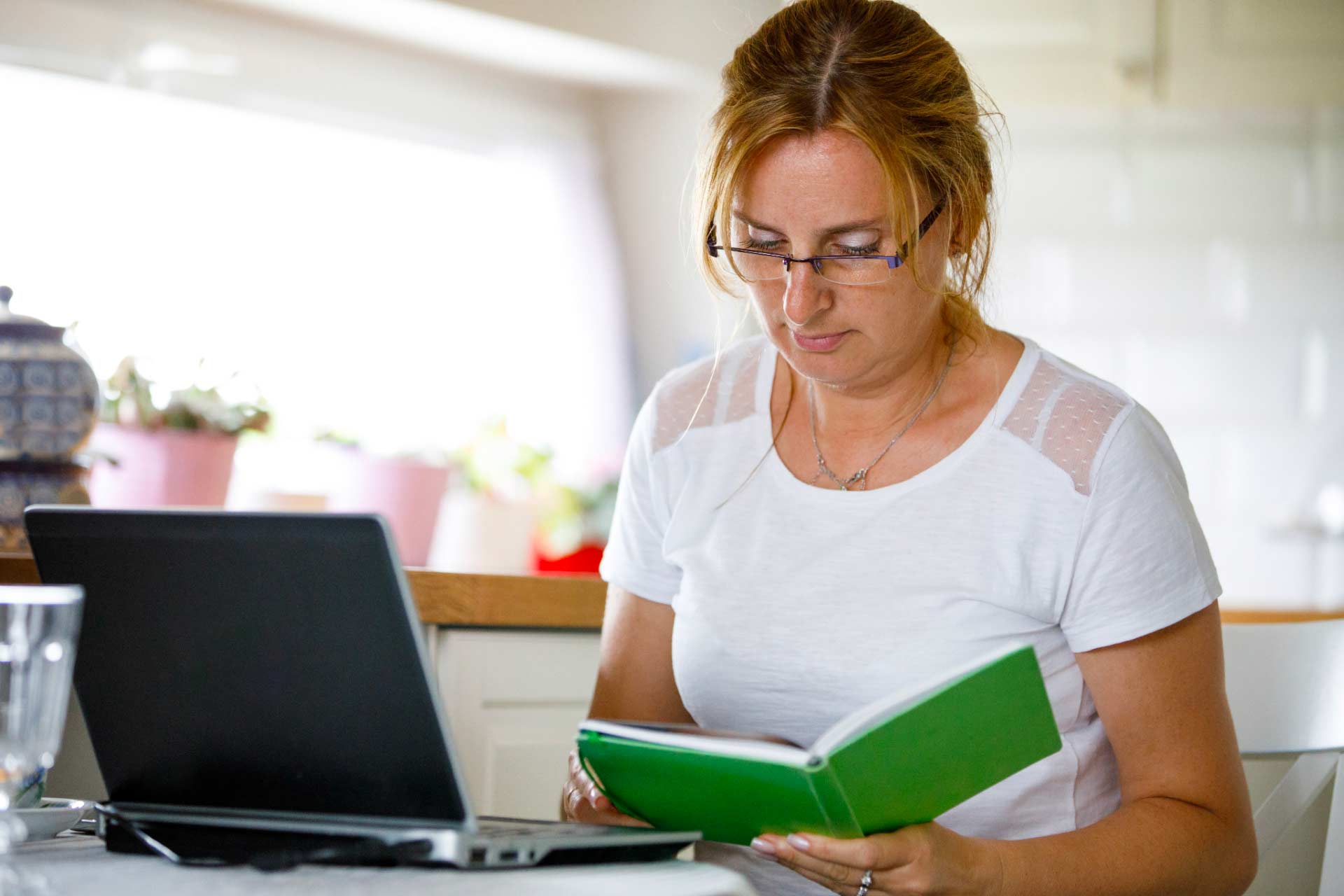
Learning more about live resin product types
Live resin is popping up in more legal cannabis products on today’s dispensary shelves. It can be confusing to sort out all the options! Here’s a quick primer on different live resin products:
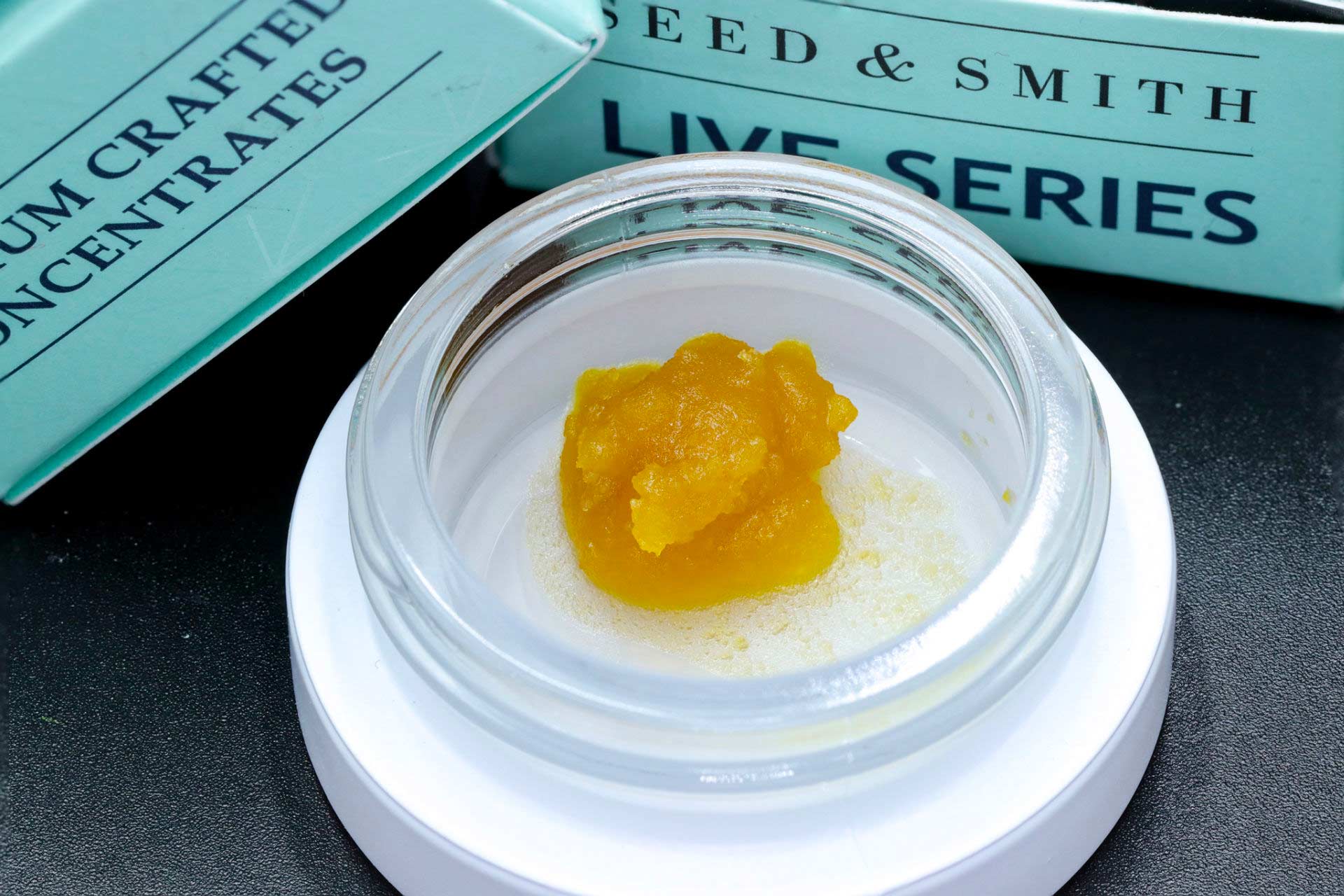
- Live resin concentrates: Live resin concentrates can be dabbed (smoked using a specially-designed dab rig), or sprinkled on top of cannabis flower before smoking to enhance flavor and boost potency. Remember that a little goes a long way! Leaf411 supporting member Seed & Smith produces a range of high-quality concentrates extracted from unique, small-batch flower strains. You can see examples of different concentrates at this link.
- Live resin vapes: Vaping is a common way that people use cannabis concentrates, and live resin vapes are quickly growing in popularity as consumers look for options that reflect the full plant profile. Live resin vapes also should not contain cutting agents like Polyethylene Glycol (PEG), Propylene Glycol (PG) or MCT oil, which can be found in some distillate-based vape cartridges.
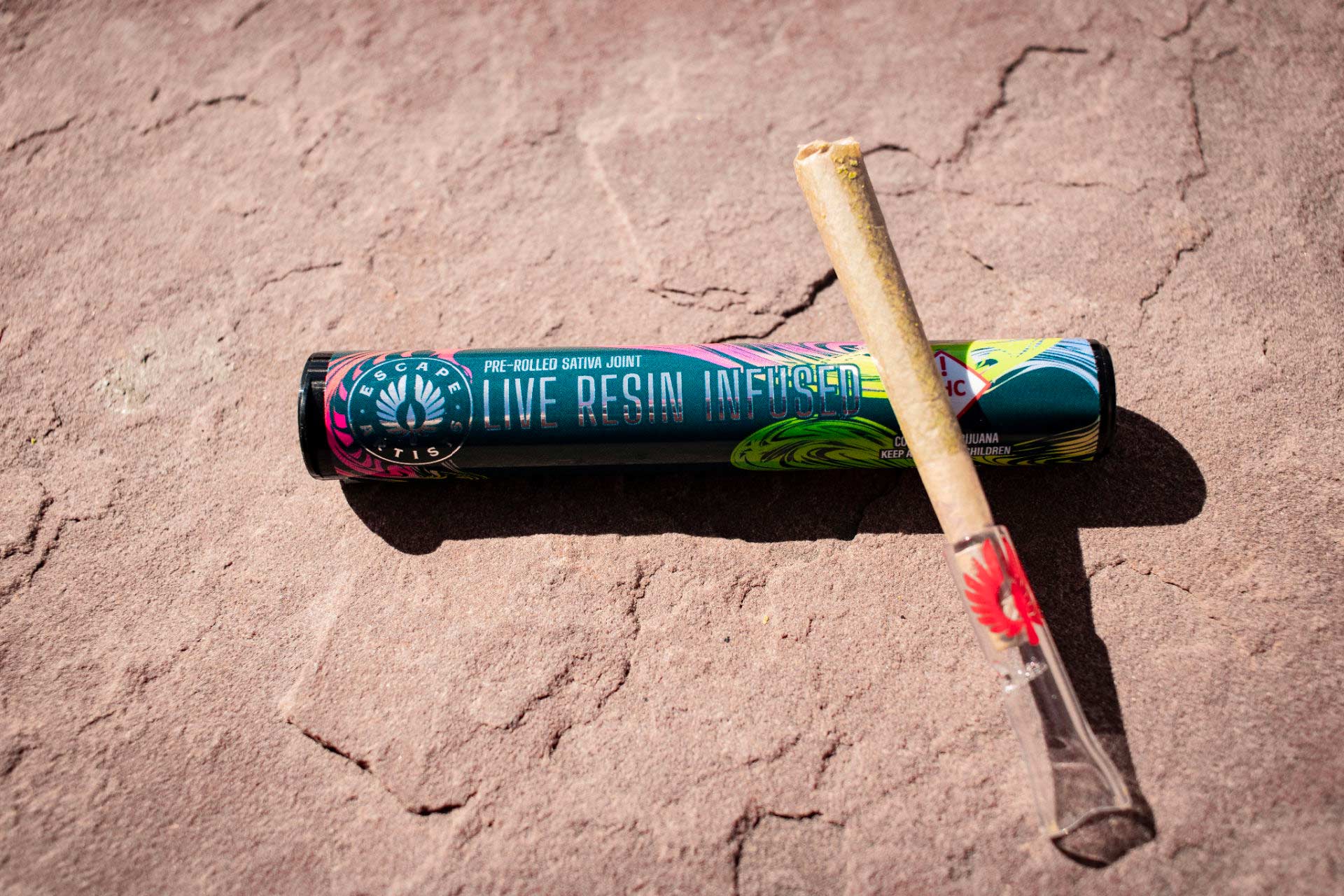
- Live resin prerolls: If you’re curious to discover how live resin can enhance a joint but not sure about rolling one yourself, some brands are now offering live resin-infused prerolls, including our supporting member Escape Artists. Of course, quality matters, which is why Escape Artists combines the best full buds (not shake) and live resin for their prerolls. Remember that a live resin joint is more potent than your standard joint–one puff may be all you need!
- Live resin edibles: Live resin edibles are newer to the scene. While terpenes primarily interact with the body’s endocannabinoid system via smell, they can also affect the digestive system where many endocannabinoid receptors are located. Brands like Dialed In Gummies are now offering single-strain edibles produced using low-heat sous vide methods to retain all the original plant compounds. (Technically, Dialed In Gummies uses live rosin, which is very similar to live resin, except that extraction does not involve butane or other solvents.)
How to get started with live resin
When trying out a live resin product for the first time, our advice is to start with a low dose and go slow. A little goes a long way! This is especially true with cannabis concentrates that can be very potent, containing up to 90% THC. Going slow also allows you to appreciate the complex terpene profiles you’ll find in live resin products.

But is live resin worth it?
Circling back to our original question, which we’re sure is on your mind as well: How much more does live resin cost and is it worth it?
Based on a quick look at two of our Colorado dispensary supporting members, Lightshade and Nature’s Gift Shop, live resin products fetch a premium, typically costing more than their distillate-based counterparts. This makes sense given the time-consuming, complex extraction processes used to make live resin. If you’re eager to explore a wider range of cannabis products, the extra cost may be worth it.
However, if you’re looking for a specific therapeutic benefit from cannabis, the answer is less clear. A lot depends on the health issue you’re dealing with, as well as the type of relief you’re seeking. Our cannabis-trained, fully-licensed Leaf RNs are more than happy to help you determine whether live resin may be a good option, or if a distillate-based product may provide targeted benefits at less cost.
Call our free, anonymous hotline at 844-LEAF411 (844-532-3411), or chat us from our home page during hotline hours, Monday-Friday from 9:00 a.m. to 7:00 p.m. for help with your live resin questions or any other cannabis or CBD hemp questions on your mind!
The Leaf411 cannabis nurse hotline provides free, anonymous education and directional support to the general public about the safe use of legal cannabis. We partner with select business members who meet our rigorous standards to extend our education and outreach efforts.
Meeting the Needs of Older Cannabis Users
Medically reviewed by Katherine Golden, RN
Written by Denise Rustning
Most calls to our non-profit, RN-staffed Leaf411 hotline are from people who voluntarily self-identify as over the age of 55. That’s no surprise to us—after all, older adults have CBD and marijuana questions that are typically more medically focused in nature, and they’re looking for guidance they can trust.

Older adults face challenges in finding medically sound cannabis information
Many primary care providers struggle to answer patient questions about the therapeutic benefits of marijuana. (We use the terms “cannabis” and “marijuana” interchangeably when talking about products containing over 0.3% THC which are legally sold in medical and recreational dispensaries.)
Why do clinicians struggle to answer patients’ questions? In part, it’s due to some clinicians’ lack of knowledge on current cannabis research. Also, many clinicians are restricted by their employers from providing guidance on medical marijuana even when they do have the knowledge. These restrictions are primarily due to marijuana’s ongoing status as a prohibited, federally illegal substance, even though it’s legal in most states.
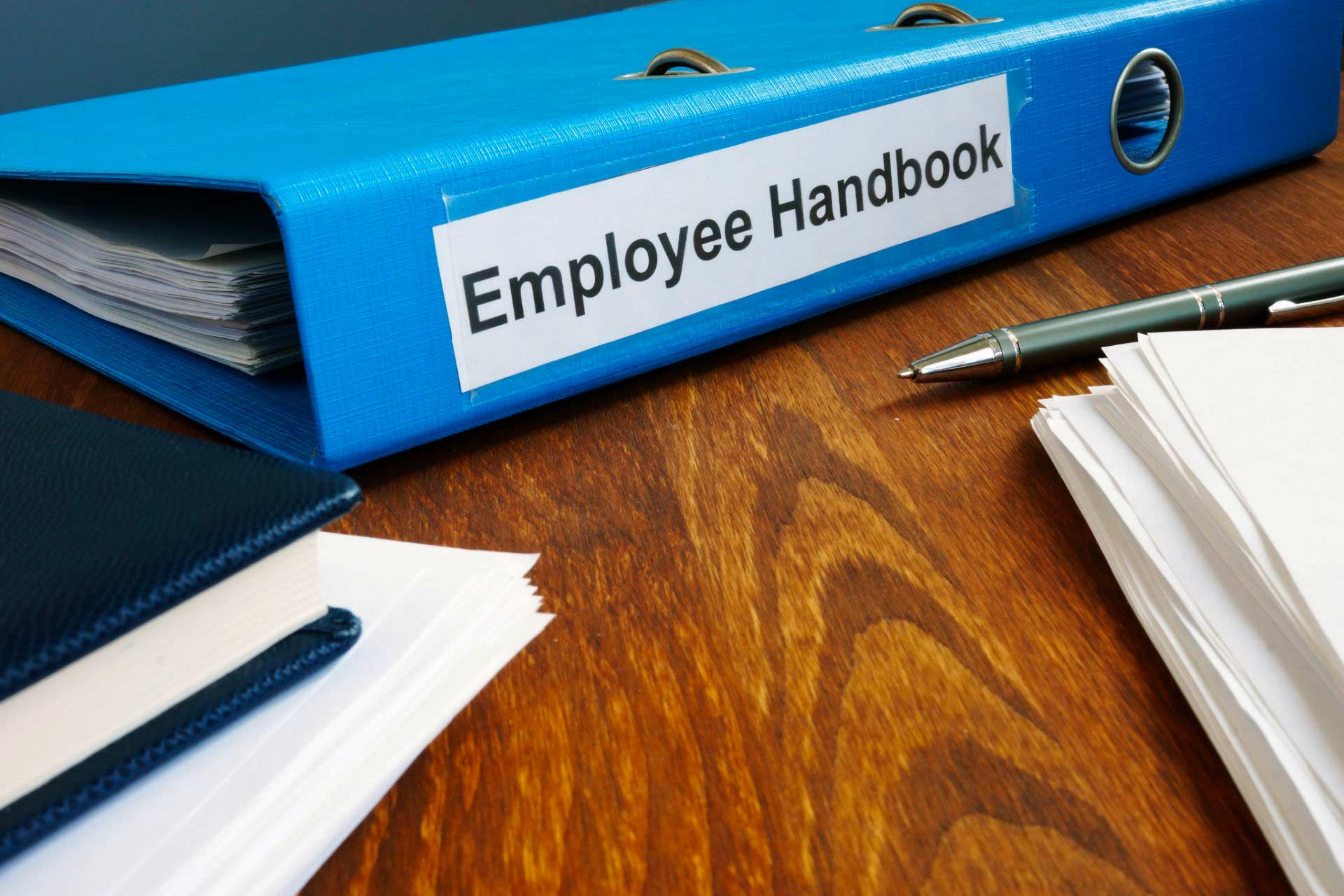
Several of our Leaf hotline nurses come from hospitals and clinics where they experienced these restrictions firsthand. In fact, one of our Leaf nurses, Natalie Murdoch, BSN, RN, shared her perspective in her guest blog last month (check it out at this link).
Doctors and nurses are leading the effort to de-stigmatize cannabis
Despite the challenges posed by cannabis’s federal status and risk-averse healthcare employers, a growing number of healthcare providers are forging ahead, including Natali and our other Leaf nurses.
Trailblazing doctors are also leading the way in shifting attitudes about cannabis in the medical field. Dr. Peter Grinspoon, who will be featured at our free Leaf Learning Series event “Demystifying Cannabis for Older Adults,” on April 22, 2021, is an outspoken advocate on the therapeutic potential of cannabis.
Equally as passionate is our advisory board member Dr. Dave Gordon at 4Pillars Health & Wellness in Denver and our business supporting member Dr. Margaret Gedde at Vibrant Health Clinic in Colorado Springs. Organizations like Americans for Safe Access, American Cannabis Nurses Association, Radicle Health and our own Eloise Theisen, Chief Nursing Officer at Leaf411, are also working hard to change attitudes around cannabis in healthcare.
While we believe the federal government will make progress soon, either decriminalizing or legalizing cannabis, the reality is that you need answers now.

Leaf411 is ready to help with your cannabis and CBD hemp questions
If you’re an older adult with questions about marijuana or CBD hemp, we encourage you to join us at our free Leaf Learning Series event, “Demystifying Cannabis for Older Adults,” on April 22, 2021. Click on this link to sign up.
Also, you can find many answers in our online Leaf Library and blog posts covering common questions and concerns we hear from older adults, including:
- Understanding different types of pain and how cannabis or CBD hemp may help
- Finding the best CBD:THC ratios to manage pain
- Aging and insomnia, and how products with THC may help
- How CBD hemp and cannabis may interact with other medications you’re taking
- Tackling common myths, like the idea that you have to inhale (smoke) cannabis to get its therapeutic benefits
- Breaking down the different types of CBD hemp available today: full spectrum, broad spectrum, distillate and isolate, along with the pros and cons of each type
Don’t forget that our fully-licensed Leaf RNs are ready to help with your questions as well! Our free, anonymous Leaf411 hotline is open Monday-Friday from 9:00 a.m. to 7:00 p.m. to answer your cannabis and CBD hemp questions. Call 844-LEAF411 (844-532-3411).
The Leaf411 cannabis nurse hotline provides free, anonymous education and directional support to the general public about the safe use of legal cannabis. We partner with select business members who meet our rigorous standards to extend our education and outreach efforts.
Don’t Miss Our Next Leaf Learning Series: Demystifying Cannabis for Older Adults
Upcoming Leaf Learning Series event features Dr. Peter Grinspoon, addresses older adults’ questions about cannabis
Medically reviewed by Katherine Golden, RN
Written by Denise Rustning
If you’re over the age of 50 and new to today’s cannabis products, you’re not alone! In fact, older adults currently make up the fastest-growing group of cannabis consumers in the United States according to recent data reported in the New York Times. We’re proud to say that we were mentioned as a resource in that article, too!
Older adults also make up the majority of callers to our Leaf411 cannabis nurse hotline. In 2020, 65% of Leaf411 callers were over the age of 55. The need for clinically-sound guidance around cannabis use for older adults has never been greater. That’s why we’re excited to announce our next Leaf Learning Series event:
Demystifying Cannabis for Older Adults on Thursday, April 22 from 2 p.m. to 4 p.m. MDT. The free event takes place online, and is open to the public. Event registration is available at this link.
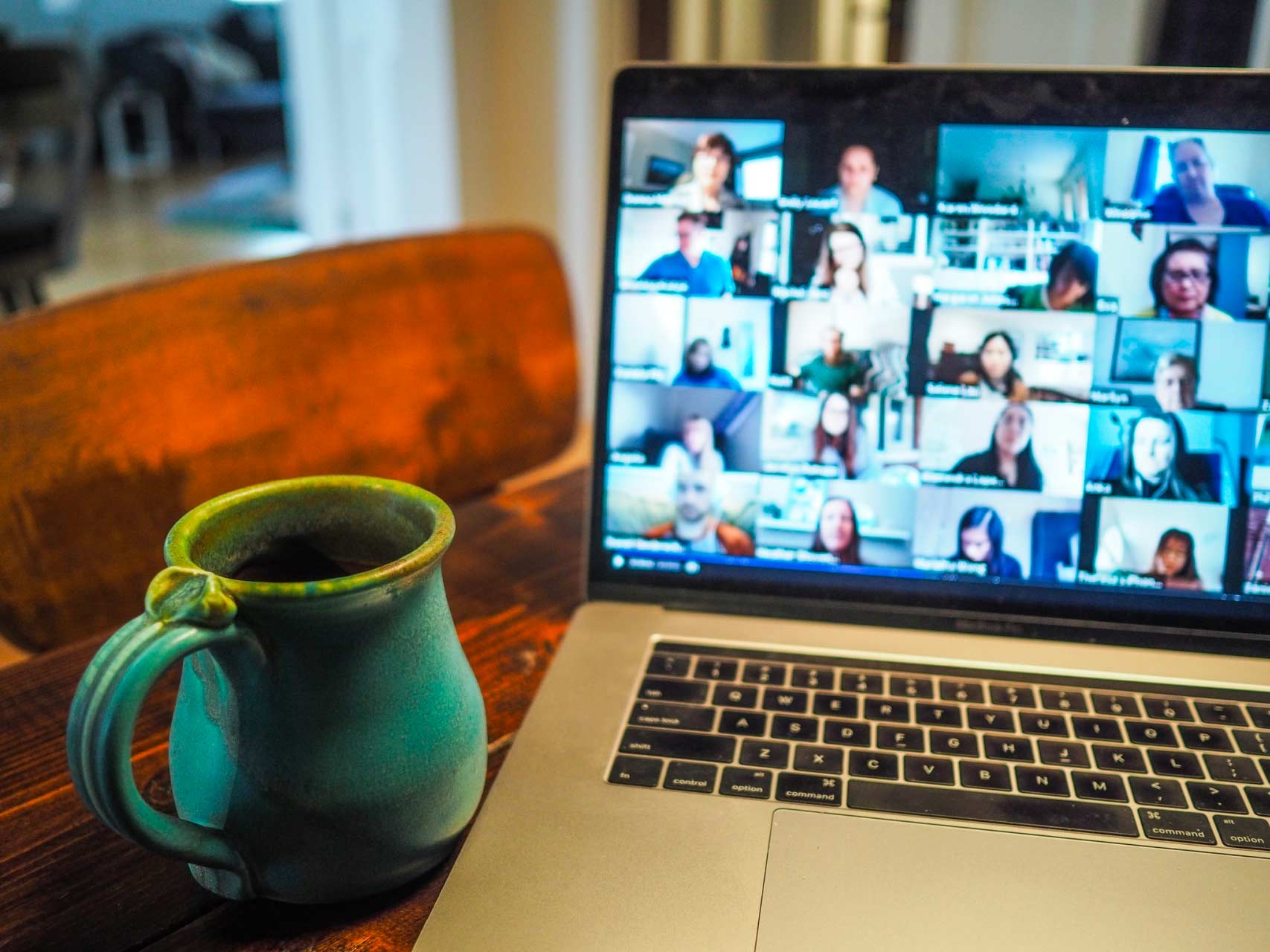
Keynote Speaker Dr. Peter Grinspoon Will Lead Candid Conversation on Cannabis and Older Adults
We’re excited to announce that Dr. Peter Grinspoon, Harvard-trained primary care physician and renowned cannabis clinician, will be the keynote speaker at our April 22nd event. Dr. Grinspoon brings 25 years of experience as a cannabis clinician as well as firsthand knowledge of the plant’s therapeutic potential.
Dr. Grinspoon has been featured as a cannabis expert in national media, including on NBC, C-SPAN, Fox, NPR as well as print publications including People Magazine, The Washington Post, USA Today, The Nation, and the Los Angeles Times.
During our event, you’ll have the opportunity to hear directly from Dr. Grinspoon and ask questions, as time allows.
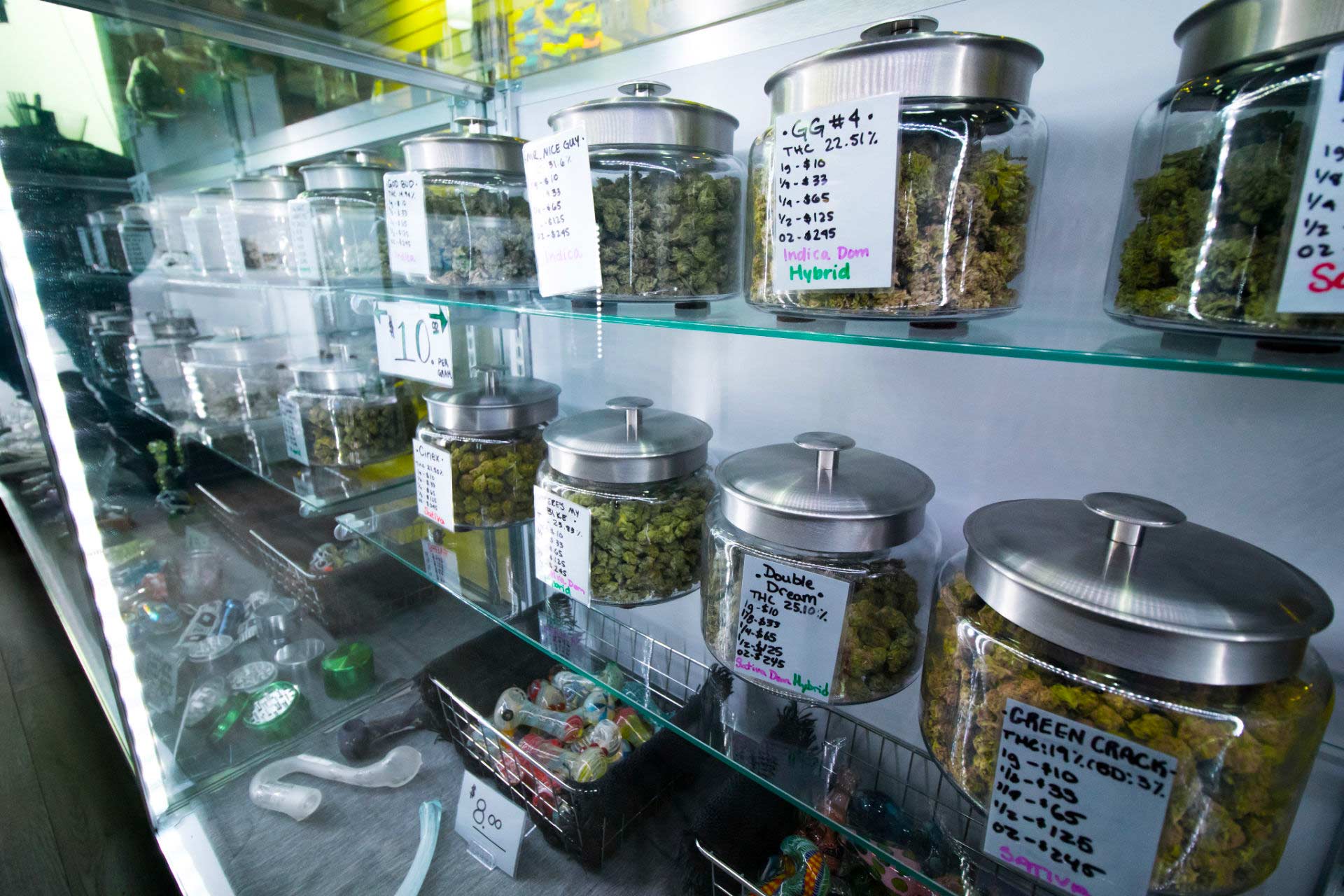
Navigating the New World of Cannabis
Today’s legal cannabis and CBD hemp products are a far cry from what existed before legalization, back when many of today’s older adults first experimented with marijuana.
At Leaf411, we know many of you are navigating a whole new world as you seek out alternatives for pain management, sleep issues, stress or other concerns. Our Leaf Learning session on Demystifying Cannabis for Older Adults is designed to help, no matter where you are on your cannabis journey.
Looking back at yesterday’s cannabis, it’s true that marijuana in the 1960s-1980s was less potent. It also was very poor quality, and was sometimes contaminated with dangerous herbicides like paraquat.
State legalization allowed progress in research and innovation around cannabis cultivation, extraction and manufacturing. Product standards also came online, with states testing for contaminants including pesticides and mold.
In other words, today’s cannabis is different—both stronger and safer—than the products you may have bought on the illicit market 40 years ago.

Not All Cannabis Products Are the Same
Needless to say, today’s expanding range of legal cannabis products have a steeper learning curve when it comes to finding the right product and dose to meet your desired effects. Both new and more experienced users may have misconceptions that can lead to a less-than-ideal outcome.
For example, we once had a caller who was experienced in smoking cannabis flower (bud), but had decided to switch to using cannabis-infused chocolate. The caller assumed edibles would affect him the same way as smoking flower, and inadvertently consumed the entire bar assuming his tolerance to smoking flower would allow him to tolerate a large dose in an edible. Following that experience, he called our hotline for help.
In fact, finding the equivalent dose between flower and edibles can be tricky, because flower lists THC by percentage, and every bud is just a little bit different when it comes to cannabinoid and terpene content. Edibles, on the other hand, list dose by milligrams per serving and are more standardized, though they too can vary due to different batches of raw flower used in the manufacturing process.
Also, when cannabis is ingested, it passes through the digestive system where the liver converts the original Delta-9-THC into 11-hydroxy-THC. The result? A delayed-but-longer-lasting high that many users report feels both stronger and different than the high you get from smoking.
Fortunately for our caller who was switching from flower to edibles, one of our hotline RNs was able to help them dial in their cannabis edible dose moving forward.
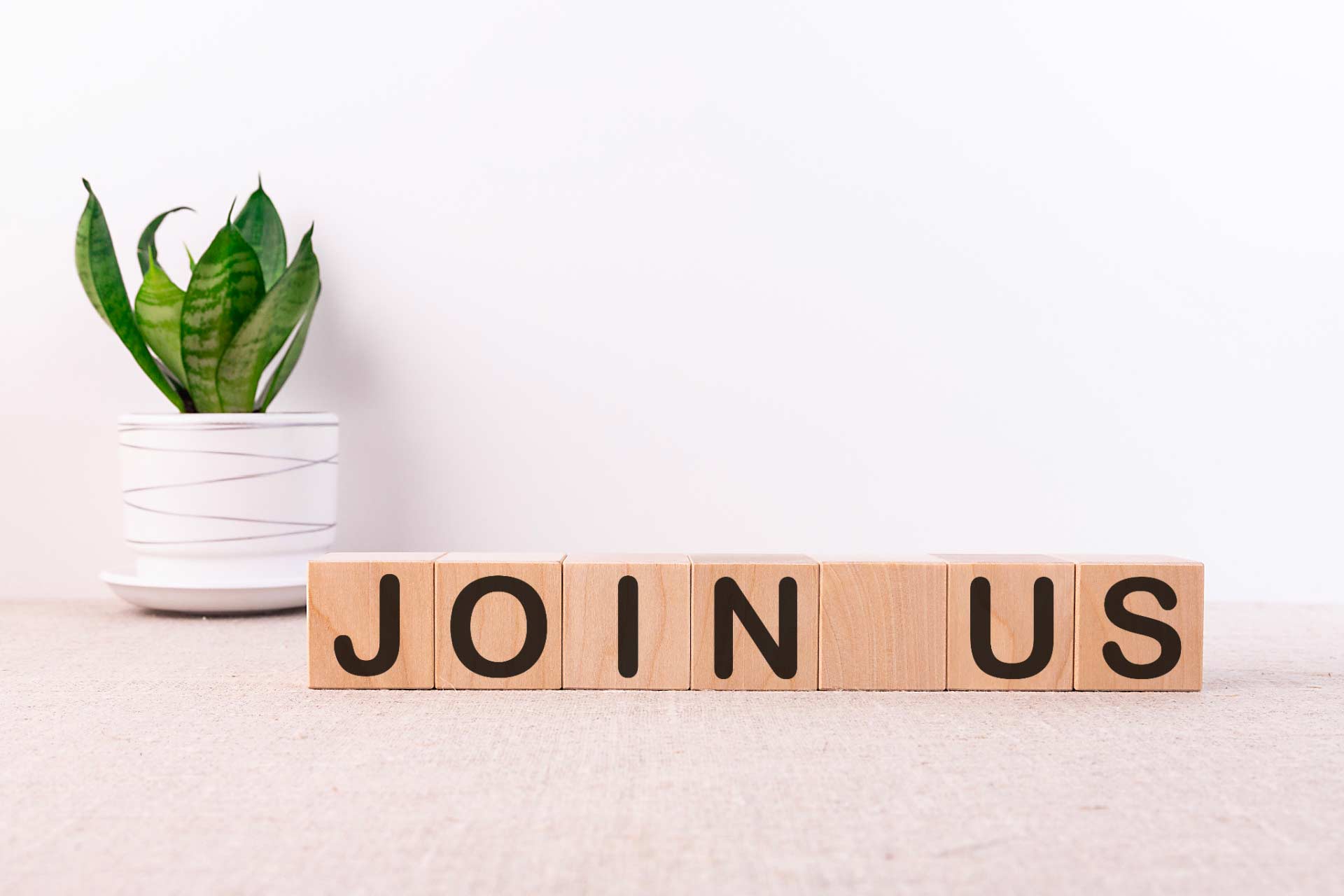
We’d Love for You to Join Us for the Leaf Learning Series: Demystifying Cannabis for Older Adults
At Leaf411, our bottom-line goal is that everyone has access to evidenced-based information and guidance on safe cannabis use. That’s why we created the hotline as a nonprofit whose mission is to provide free RN guidance to the public, and why we’re hosting the upcoming Leaf Learning Series event tailored to older adults. It is essential to understand the nuances of the new cannabis market you see today to help you understand what you are truly consuming. Learning events can provide the peace of mind needed to make an informed decision.
Don’t wait until the last minute to sign up! Free registration is open now at: https://hopin.com/events/leaf-learning-series-demystifying-cannabis-for-the-older-adult
The Leaf411 cannabis nurse hotline provides free, anonymous education and directional support to the general public about the safe use of legal cannabis. We partner with select business members who meet our rigorous standards to extend our education and outreach efforts.
Building an Inside-Outside Daily Cannabis Routine
Medically reviewed by Katherine Golden, RN
Written by Denise Rustning
When our supporting member Escape Artists let us know they were launching new cannabis tinctures, we were curious to learn what inspired the expansion of their product line.
Escape Artists is well known for its fast-acting topical Relief Cream and Recovery Cream, both of which are beloved by many Coloradans. The brand also offers Speed Strips, fast-acting dissolvable strips that deliver THC through the mouth’s mucosal tissue directly into the bloodstream, with effects lasting a couple of hours. These innovations build on the team’s prior experience working in food science and the pharmaceutical industry.
While these fast-acting products are a good fit for an on-the-go lifestyle, Escape Artists began getting requests from consumers and retailers for a longer-acting tincture that could be integrated into wellness routines, creating an inside-outside daily cannabis routine.
In response, Escape Artists is rolling out three new tinctures:
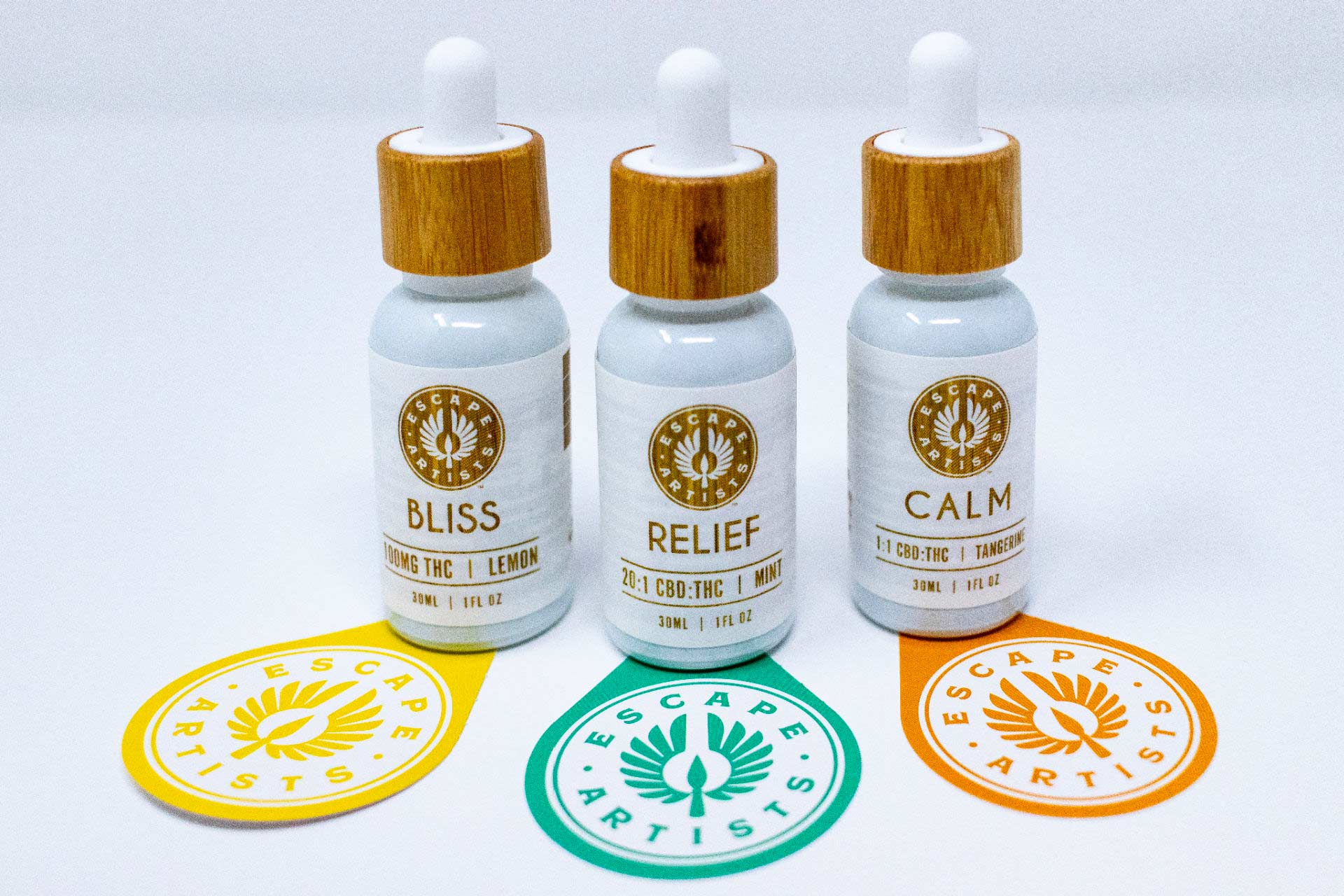
- Lemon Bliss tincture containing 2.5mg THC per 0.75ml serving/dose (100 mg THC per bottle)
- Tangerine Calm 1:1 ratio tincture with 2.5mg each CBD and THC per 0.75ml serving/dose (100mg CBD and 100mg THC per bottle)
- CBD-dominant 20:1 Peppermint Relief tincture with 50mg CBD & 2.5mg THC per 0.75ml serving/dose (2,000mg CBD and 100mg THC per bottle).
The tinctures are all-natural, containing only: MCT oil, THC distillate and natural flavorings, as well as CBD isolate in the two ratio products. You can learn more about each of the tinctures at this link.
The marked droppers can help you start low and go slow with your dose.
A typical, safe starting dose for anyone new to THC would be about 1mg – 2mg. Starting this low may not provide the relief you are looking for, but that’s okay. A very low dose allows you to test your THC tolerance and feel comfortable with consuming for the first time.
Our nurses on the Leaf411 hotline can help you figure out a first-time low dose and then guide you with how to safely increase your milligrams until you experience the relief your body needs. Call the FREE hotline at 844-LEAF411 (844-532-3411) with any questions you have about dosing cannabis.
“Our end goal is meeting patients’ and consumers’ needs, making sure our products truly help,” says Tucker Council, Escape Artists Marketing Lead. “Our all-natural tinctures provide additional options for consumers to integrate an inside-outside approach to their daily cannabis wellness routine.”
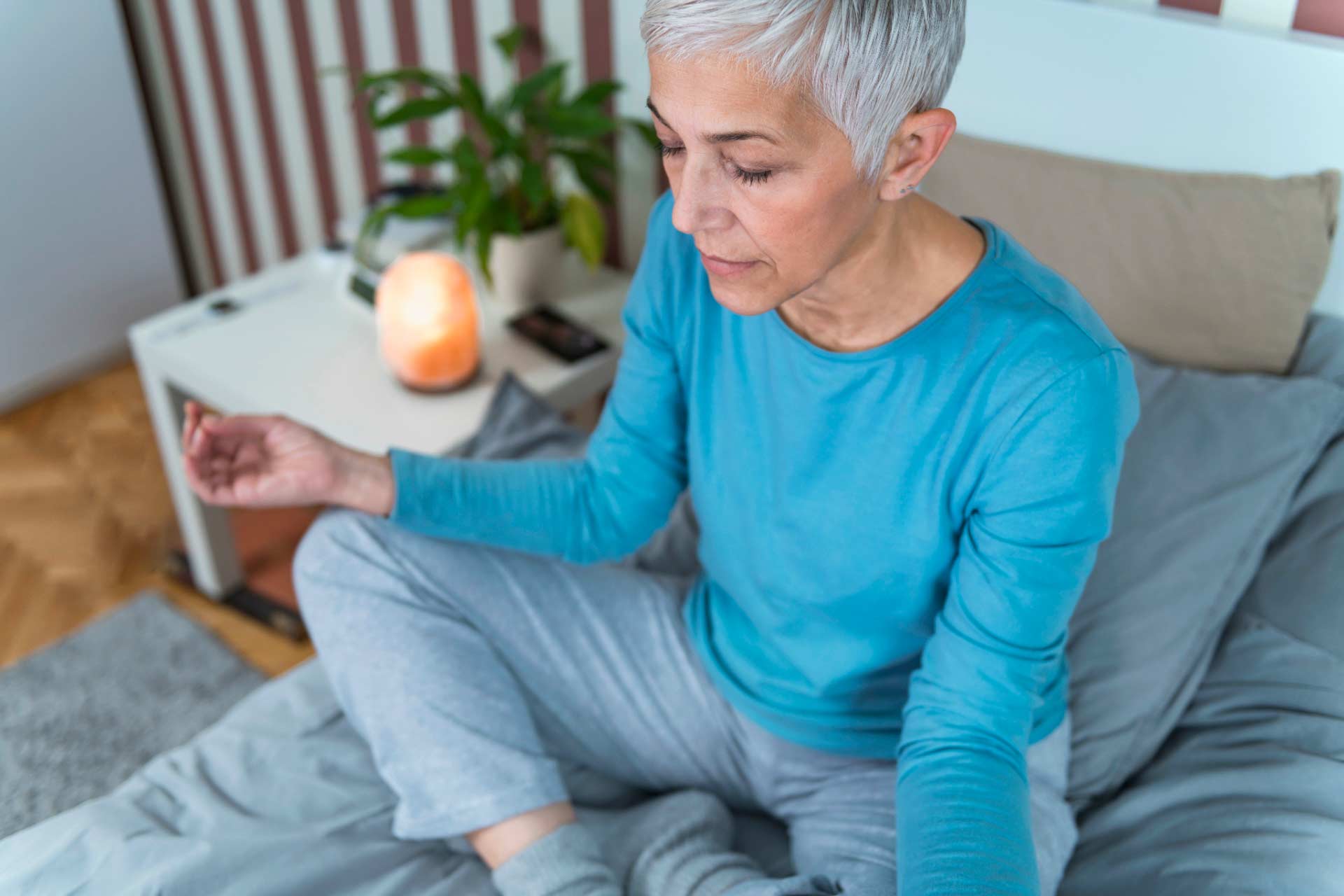
What is a Daily Cannabis Routine?
Daily routines form the foundation of many people’s wellness regimen. Whether it’s a morning walk before logging on to the computer, a healthy lunchtime smoothie, or an evening meditation to wind down, these practices provide balance that protects against everyday life stressors.
In the same way, many people discover that cannabis is an impactful addition to their daily wellness routines. That should not be a surprise considering how the cannabis plant’s cannabinoids (THC, CBD and others), terpenes and other plant compounds interact with the body’s endocannabinoid system, which is designed to restore and maintain homeostasis (balance).
Daily cannabis routines are often critical for patients’ symptom management and overall quality of life, providing a safe alternative to heavy-duty pharmaceuticals that often cause excessive sedation and other significant side effects.
For people who do not have ongoing or serious health concerns, a daily cannabis routine may nonetheless provide benefits, especially around relaxation and restoration.

Designing Your Daily Routine
Daily cannabis routines work best when created for specific results. For example, you may want to take daily pain-free walks without excessive soreness afterward, or you might be seeking to boost evening relaxation before bedtime.
Whatever your aim, the following steps can be helpful for building an effective cannabis routine:
- Get specific with your goal: Think through your goal and the results you hope to achieve.
- Find supporting strategies: Cannabis is only one of many tools available for wellness and works best when paired with other approaches. For example, if your goal is relaxation before bedtime, you’ll also want to identify other ways to create a peaceful environment by turning off electronics, re-centering your thoughts, etc.
- Identify your deal-breakers: It’s just as important to know what you don’t want as it is to know what you do want. When it comes to cannabis, our Leaf nurses hear from many callers who want relief without feeling “high.”
Escape Artists and many of our other Leaf411 supporting members offer ratio products that can easily be split into microdoses, giving you the benefit of both CBD and THC cannabinoids while minimizing the likelihood of intoxication. We also have supporting members who specialize in CBD hemp products that are non-intoxicating. Our Leaf nurses can answer your questions about any legal products on the market today—call us at 844-LEAF411 (844-532-3411). - Find the best product format: Odds are that if you’re already using cannabis, you have your favorite modes of consumption, whether that’s smoking flower, vaping concentrates, using edible or topical products. But does your favored format fit both your goal and your daily routine? You may find you need to change your consumption habits to align with your new goals.
- Consider creating a ritual as part of your routine: Rituals support mindfulness and intention, helping you focus on your goals. Rituals don’t need to be fancy, either!
Many people find that grinding cannabis flower and rolling a joint is a relaxing, re-centering practice that honors the plant while providing respite from a hectic day. This same type of intentionality can be used for other cannabis forms, as well. For example, when using edibles or tinctures, you might take one minute to do a quick meditation or affirmation before consuming. These small rituals can have an outsize impact when it comes to achieving your goals. - Commit to daily practice: You’ve spent time identifying your goal, finding the supporting practices and products that fit, and creating a plan for your daily cannabis routine. Now comes the most important part—commitment! Most experts agree that it takes between 21-30 days for a new habit or routine to stick. If you need help, there are many books, websites and apps.
How to Layer Cannabis Products
Your daily cannabis routine may involve layering different products throughout the day to match the needs of the moment. How do you achieve this without going overboard?
Let’s go back to our example of wanting to take daily pain-free walks without excessive soreness, and see how you might layer different products to support that goal:
Step One: You would first layer the product that stays in your system the longest. A tincture that you swallow fits that bill. Typically with anything you swallow, you can expect to get about 6-8 hours of relief. (Fast-acting cannabis ingestibles like Escape Artists Speed Strips are the exception.) Timing is key, so consuming the tincture about 1-2 hours before your walk should ensure that you have proper coverage.
Step Two: In addition to the tincture, you can apply a topical to the areas that cause the most concern. Now you are treating the pain associated with your walk in a preventive fashion before the pain becomes too intense.
Step Three: The last layer would be for immediate treatment. For example, when you’re finished with your walk and now experiencing some increased pain, you can take a fast-acting product, like Escape Artists Speed Strips, that hits the system fast for instant relief but also exit the system fast, making them ideal for breakthrough pain. Products like Escape Artists Speed Strips give the consumer another option besides inhaling to quickly get THC’s pain-relieving benefits.
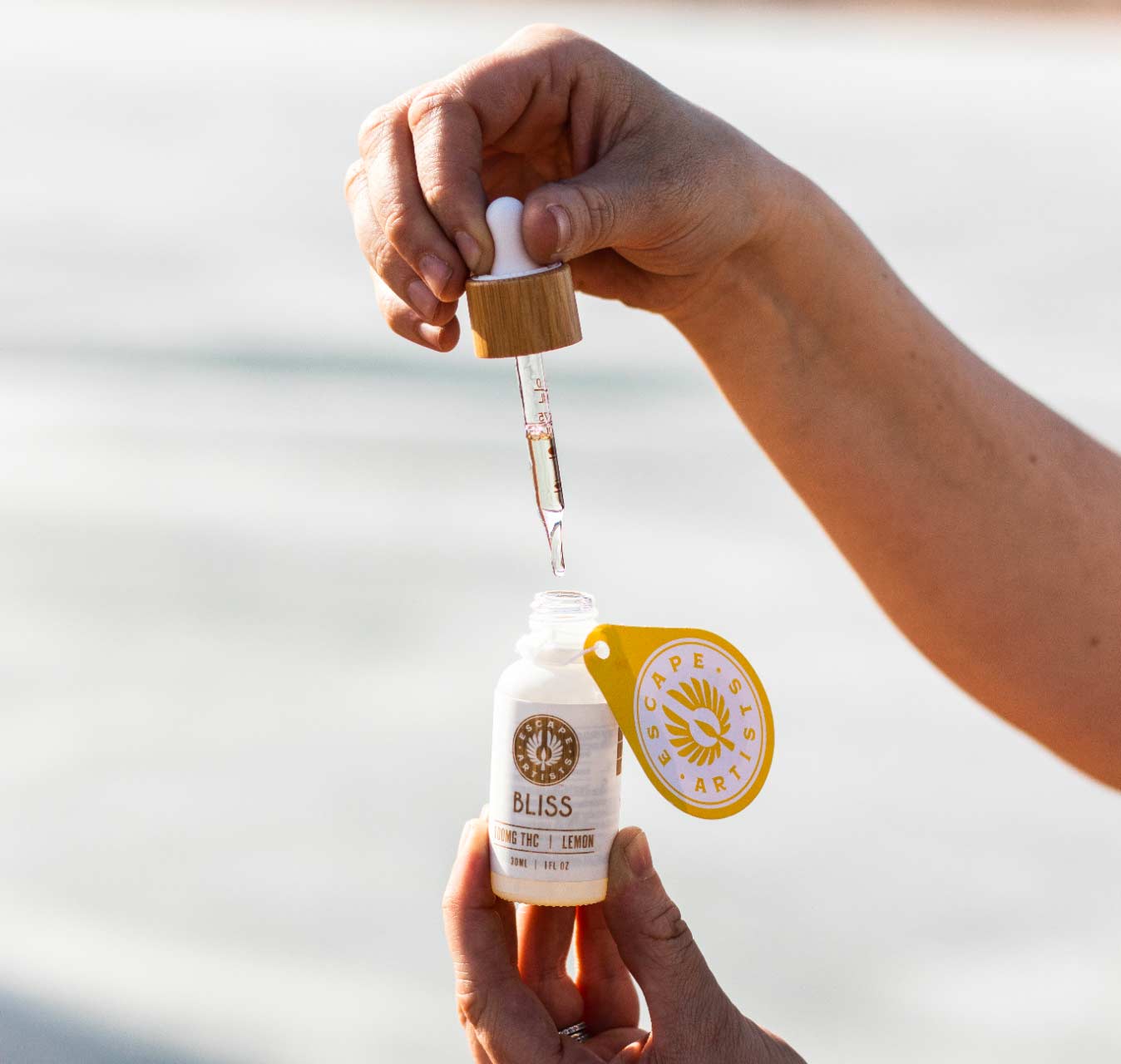

Sign Up for Our FREE Virtual Education to Learn More!
New routines come with new questions like:
- How will THC make me feel?
- How do I know if the products are working?
- What cannabis medication interactions should I be aware of?
Our next Leaf Learning Series will cover those types of questions and more, with a specific focus on the needs of older adults.
Join us on April 22, 2021, from 2 p.m. – 5 p.m. MDT, for our beginner-friendly virtual event on Demystifying Cannabis for Older Adults. The event is free, though you need to sign up in advance at this link: https://hopin.com/events/leaf-learning-series-demystifying-cannabis-for-the-older-adult
During the event, you’ll hear from Dr. Peter Grinspoon, a renowned Harvard-trained primary care physician and medical cannabis consultant who speaks from both personal and professional experience. Dr. Grinspoon will be available to answer your questions at the end of his presentation.
We’ll also have many of our supporting members on-hand, including Escape Artists, to share product insights and answer any questions you might have.
You definitely do not want to miss our April 22, 2021, Leaf Learning Series: Demystifying Cannabis for Older Adults. Click here to sign up today!
Can’t make the event? Our fully-licensed Leaf RNs are available on our free hotline at 844-LEAF411 (844-532-3411), Monday-Friday from 9:00 a.m. to 7:00 p.m. to answer your cannabis and CBD hemp questions.
The Leaf411 cannabis nurse hotline provides free, anonymous education and directional support to the general public about the safe use of legal cannabis. We partner with select business members who meet our rigorous standards to extend our education and outreach efforts.
The Cannabis Industry Needs Nurses

By Eloise Theisen, AGPCNP-BC
CEO, Radicle Health
Executive Board Member, Leaf411
(Note: This article was originally published on the RadicleHealth blog.)
The cannabis industry (and particularly the hemp space) has been gaining momentum. Last year was a monumental year for cannabis legislation. With 36 states and the District of Columbia allowing some form of medical cannabis, 15 states plus D.C. allowing adult use, and the descheduling of hemp, it is safe to say that cannabinoid therapy is here to stay.
It is estimated that there are around 3,000 CBD companies in the United States alone. Many of those companies are not expected to survive, with COVID-19 playing a significant role in their demise. According to Hemp Industry Daily, the top 20 hemp CBD companies account for 17% of the market share. The rest of the market is made of new CBD enthusiasts who are not well-established brands, and they are finding it harder to survive in the crowded space.
Cannabis companies like Acreage, Tilray, Aurora, Canopy, Cresco Labs, GW Pharmaceuticals, and Tikun Olam are hoping to position themselves as leaders in the cannabis space. These companies have multistate operations in medical and adult-use states. More states are predicted to put cannabis legalization on the ballot in 2021 and there is talk of federal decriminalization happening by 2022. As these national brands expand, they too will need to consider unique ways to positions themselves among the competition.
So how do brands establish brand loyalty and secure a piece of the market? A leading data analyst and consulting company speculated that survival will depend on brand differentiation. Companies can position themselves by increasing distribution through multistate operators, aligning with well-established nutraceutical companies, and working with large retail chains. What else can they do to establish brand differentiation? They can hire a nurse.
As the market becomes more competitive, brands will need to be creative about offering services that help them stand out. Nurses are an excellent way for brands to craft credibility, brand differentiation, and brand loyalty.
For 19 years in a row, consumers have voted nurses as the most trusted profession. Beyond gaining the public’s trust and respect, nurses are educators, counselors, leaders, and advocates. Nurses promote health and wellness, interpret patient information, conduct research, and improve practices and patient outcomes. And yet nurses are rarely employed by cannabis companies.
Nurses can bring incredible value to cannabis companies. In addition to offering instant credibility, they can collect data, identify trends, provide training and education, and coach patients through the medical cannabis process. Cannabis companies: what are you waiting for? We need more nurses in the industry.
Eloise Theisen (CEO, Radicle Health) is a board-certified Adult Geriatric Nurse Practitioner with over 20 years experience in nursing. Prior to cannabis, Eloise worked for 14 years in oncology at John Muir. Eloise started her own cannabis practice in 2015 and has treated over 7000 patients using cannabis. Eloise is the current President of the American Cannabis Nurses Association and an Executive Board Member for Leaf411.
References
Nichols K. Chart: 2020 an ‘extinction event’ for thousands of CBD companies, but industry remains crowded. Hemp Industry Daily. https://hempindustrydaily.com/chart-2020-an-extinction-event-for-thousands-of-cbd-companies-but-industry-remains-crowded/. Published August 3, 2020. Accessed February 25, 2021.
Skelly C. Top CBD Companies. https://blog.brightfieldgroup.com/top-5-cbd-companies. Accessed February 25, 2021. Skelly C. Top CBD Companies.
Why you should be keeping a cannabis journal
Note: Our Leaf411 Blog periodically shares articles from The Cannigma, a trusted resource for research-backed medical cannabis education and information. We loved their recent piece on cannabis journaling! Journaling is a practice we often recommend to callers.
You don’t need to be a gifted writer to keep a cannabis journal! The purpose of the journal is to record your goals and experiences using specific cannabis products, doses or CBD:THC ratios, which can help you identify the most effective cannabis regimen moving forward.
Cannabis journaling only requires a notebook or a simple spreadsheet. However, there are several apps on the market that can help, if you’re looking for a more customized approach. Check out the Cannigma article below to learn more about what to track and how journaling can help you dial in cannabis to your health goals. Remember, too, that the Leaf nurses are available to help at no cost via our hotline: 844-LEAF411 (844-532-3411)
This article was originally published on The Cannigma and appears here with permission.
by Ben Hartman
Feb 15, 2021
Despite the traumatic brain injury, chronic pain, and years of PTSD, Otha Smith considers himself one of the lucky ones.
Pronounced dead at the scene of a car accident in 2003, a friend and medical student he was traveling with performed CPR until a medivac helicopter arrived, giving him another chance at life.

Otha Smith, CEO of Tetragram (Otha Smith)
Smith eventually recovered, but “started to go down a really dark path” with the prescription medications, so he turned to cannabis.
Years later, when medical cannabis was legalized in Maryland, where he lives, Smith told The Cannigma how he suddenly had access to a whole world of weed he had never encountered with his old dealer. He had to find the products helped him the most, and it was a lot more work than just choosing a jar with a pleasant-enough sounding strain name.
Fast-forward to 2020, and Smith and two co-founders launched “Tetragram,” a mobile app designed to help medical cannabis patients determine which products — including which strains, formulations, and delivery methods — work best for their ailments or even their recreational use goals.
Tyler Dautrich, the COO of Releaf, another cannabis journaling app, told The Cannigma that his app “is geared towards helping that individual lessen the amount of time and money they spend in that trial and error process and strictly hone in on what works for them.”
Both apps are technological tools for journaling, a technique that can be used by medical patients looking to treat specific symptoms or conditions, but also by recreational cannabis users trying to hone in on the products and delivery methods that will reliably produce the effects they’re looking for.

What is cannabis journaling?
Cannabis journaling can be in the form of a simple diary or journal, Hello Kitty stationary, or an Excel spreadsheet on your computer. Online apps like Releaf and Tetragram are growing in popularity, and are well-suited for a smartphone.
Journaling can make cannabis use more mindful, deliberate and based on goals, past experiences, and your own personally cultivated data tracking what works best for you. It’s a way of getting the most out of the legal cannabis field in which there is an almost bewildering amount of options.
It can also help cannabis consumers tune out some of the noise, Dautrich said.
“As legalization trends continue and more and more options become available, companies are branding completely different products in the same way so there a lot of products that are labeled differently than what they’re actually for,” Dautrich stated, adding that “with journaling, you have a lot of knowledge and data and information backing up your purchase so you know you’ll get a similar outcome.”
When you go to the grocery store or pharmacy, Dautrich explained, even if you can’t find the exact brand and product you’re looking for, you can be confident that you can find an alternative that produces the same results. Cannabis consumers do not have that luxury.
Dautrich said that there isn’t a typical Releaf user, and that their users include new cannabis consumers who are looking for some help navigating the world of cannabis, as well as connoisseurs who are using the app to track their consumption and rate different brands and products. He likened the connoisseurs using the app to craft beer fans who use similar apps for beer, to record beers they’ve tried, the taste profiles, aromas, and how they feel.
But what should cannabis users be journaling?

What to track in your cannabis journal
Regardless of what journaling method you decide upon, it is important to take some time and set it up and acquaint yourself before attempting to record your first session or product. There are many different ways to journal your cannabis use — a lot will depend on your goals of treatment but also what information or insight you hope to gain from journaling. From the sections below, pick those that feel most relevant to why you are journaling your cannabis, and make sure to be consistent so that can easily spot trends and useful insights later.
- Set and setting
When and where is the particular cannabis session. What is the time? The date? How do you feel as you start? Is there anything unique about the situation or about how you feel?
- Your goals
Why are you using cannabis right now? Are you looking to treat specific symptoms or alleviate a particular health condition? Are you looking to relax in the evening or find a product that produces an energetic high during the day? Do you just want to get a good night’s sleep? Identifying and setting your usage goals allows you to gauge which products produce the results you are looking for, and which miss the mark.
- Product type, delivery method, and dosage
How are you taking the cannabis? Are you smoking? (If so, from a pipe or bong or joint?) Vaping? Using a tincture? Taking an edible? Different delivery methods can affect you in different ways, even if they come from the same chemovar or strain. How much are you taking? Be specific! With edibles and tinctures it’s easier to know what dose you took down to the milligram, but if you’re smoking a joint or using a vape pen, write down how many puffs you took.
- Product details
Different products can have the same strain name but different cannabinoid and terpene profiles, and different batches of the same product produced by the same company can even have different THC or CBD levels. That’s why recording the brands and products names is so important for making sure you are able to replicate the good sessions and avoid revisiting the disappointing ones. While this often involves writing down the strain name, as long as you’re also noting the brand and product name you should have all the information you need.
- Cannabinoid and terpene profile
Recording the THC, CBD, and other cannabinoid content of your cannabis product is crucial. If it’s flower or a vape pen, you’ll want to record the listed percentage of THC, CBD, or other dominant cannabinoids. If it’s a tincture, edible, drinkable, or capsule, you’ll want to record the milligram unit of each cannabinoid that you are taking during your session. But don’t stop there. Terpenes can also have a major impact on the effects, as well as the flavor and aroma of your cannabis. Knowing and recording which terpenes are present in your cannabis is an important tool for figuring out what cannabis products work for you.
- How it made you feel
This is the most important part. How did the session make you feel? Did you achieve your goals? Relieve your symptoms? For how long? Did you like the way it made you feel? Were there any adverse side effects? If it’s helpful, you can rank each of the effects from 1-10 to track how effective the session was for each of your goals. Just make sure you’re consistent with how you record this info — it will make it easier to compare and see what is working best. Ultimately, this is the most crucial factor in determining if a product is right for you and it is at the core of why cannabis journaling is important.
After a few, dozens, or hundreds of entries into your cannabis journal, you should be able to see the common denominators of what factors contributed to a successful session — be it the dose, cannabinoid profile, terpene profile, delivery method, time of day, or any combination of those or others. Don’t be discouraged if the answers aren’t apparent right off the bat — it could be a process of narrowing a broad range of products down to a few. You may even find that different products work for you in different situations or for treating different symptoms. A cannabis journal can also be very helpful to bring to your next doctor’s appointment to discuss what is and isn’t working in order to find the right treatment regimen.

Different cannabis journals
There are several options out there for journaling your cannabis use, whether it’s as a patient, budding connoisseur, or any other reason. You can go the DIY route and make your own physical journal or Excel sheet with custom formulas, use one of the specially designed online apps, or purchase a beautiful physical cannabis journal.
Releaf
Designed with what the company describes as “the basic principle that there had to be a better way to track and demystify the world of medical cannabis,” Releaf is a free mobile app that allows users to track a wide range of aspects of their cannabis use, including their dosing, level of symptom relief, feelings, and side effects, among others. The app also provides customized trends and insights that are based on the user’s own input.
On the app’s “sessions” dashboard, users can review all of their sessions in detail. While on the “cannabis on hand” section, users can organize all of the different cannabis products they have at the moment, by name, rating, and date.
Rating makes it easy to see which product has been the most effective for the user, in that it presents a score which is the average rating the user gave it for each parameter. Users can also provide feedback on products at any time.
Tetragram
Tetragram is a free “smart, digital journal that helps you get the most out of medical cannabis.”
The app allows users to create a digital diary of their cannabis experiences by way of sessions in which the user logs a series of data points including strain, product, intake method, dispensary where it was purchased, symptoms treated, quality of experience, and flavor and appearance.
Users can rate each individual cannabis product and share their ratings as well as photos and comments with the community of Tetragram users.
The app can also be used to find similar products to ones that worked well for the user.
The app is fully customizable for every user’s particular cannabis needs and goals.
Goldleaf
Anybody who has ever held a beautiful glass pipe in their hand or gazed longingly at a perfect trimmed and cured, frosty nug of cannabis knows that sometimes form can be almost — but not quite — as important as function.
Goldleaf produces a wide variety of sophisticated, informative, and handy journals for all types of cannabis users. The templated and educational notebooks are suited for everyday users, patients, and growers alike, and come complete with infographics and artwork covering a variety of topics in cannabis.
Take for instance “the Cannabis Taster,” a “pocket journal for those who appreciate fine cannabis.” It comes with 25 full-spread templated entry pages, as well as purveyor sections for logging favorite dispensaries, growers, and products, as well as flavor and terpene infographics.
And of course, if none of those strike your fancy, you can find lots of custom-made and beautifully designed cannabis journals on Etsy.

How journaling can make cannabis better
In addition to helping patients optimize their cannabis use, online cannabis journaling platforms can also have a potential benefit to the cannabis industry. The anonymized data is made available to scientists and people within the cannabis industry, to help them design products with the right chemical profiles to treat specific conditions and symptoms.
According to Smith, “all this aggregated data we’re collecting we can provide to the medical professionals and say listen, this is no longer a ‘he said, she said’ — we have actual data about these strains and products and how effective they are at addressing medical conditions.”
A December 2020 study published in the Journal of Cannabis Research examined data from 670 users, who recorded their cannabis use sessions with the Releaf app. The study looked at how cannabis use changed feelings of agitation/irritability, anxiety, and stress, as well as side effects, producing findings that could be of valuable use to cannabis producers.
According to the researchers, the data indicated a decrease in symptoms intensity levels in 95.51% of cannabis usage sessions. The data also served to indicate that mid and high THC forms of cannabis “were the primary independent predictor of increased symptom relief.”
Dautrich said the Releaf app isn’t meant to replace the doctor-patient relationship, rather, to improve it by helping both patients and doctors have a more informed and educated relationship with cannabis.
He added that Releaf is also working with companies in the cannabis industry, to allow them to use customer reports to help them improve formulation decisions for their products, as well as which products to market to which customers.

How doctors view cannabis journaling
Dr. Lewis Jassey is the Medical Director of Pediatric Medicine at Leafwell, a network of online medical cannabis clinics. He told The Cannigma that in his practice he uses a form that patients can fill out to describe their health condition and how it affects their daily life. This information is later used to determine how medical cannabis is helping these issues, in order to gain what he describes as “an objective barometer to determine if treatment is working for a patient.”
Jassey shared a version of the questionnaire used for chronic pain patients, which contains nearly two dozen questions about their history with pain.
“This is designed to establish that there is a true medical indication for you and your body and it’s not just, ‘oh you’re in pain and I’m approving you [for medical cannabis].’”
For Jassey, this sort of data collection is key not only in helping the patient, but also in showing the efficacy of medical cannabis.
“We want to be pioneers and in the forefront of helping to demonstrate that medical cannabis can in fact help out with many conditions, but you have to have objectivity in your notes.”
Journaling and these forms of questionnaires are also a way of making sure that treatment is customized for that particular patient’s needs, Jassey said.
It’s not appropriate to take a cookie-cutter approach to every patient, Jassey said, adding that “this is not a meat market, or a factory, this is peoples’ lives and this is their day-to-day functionality and this is trying to establish medical cannabis in a more mainstream way and to do that you have to establish the credibility.”
“So it’s not about churning out the next patient, or how many patients I can see in a day. It’s about having meaningful experiences with them so that they can know what’s on their radar so when we have our next follow up I know what to look for and what their [cannabis] application should be,” he added.
